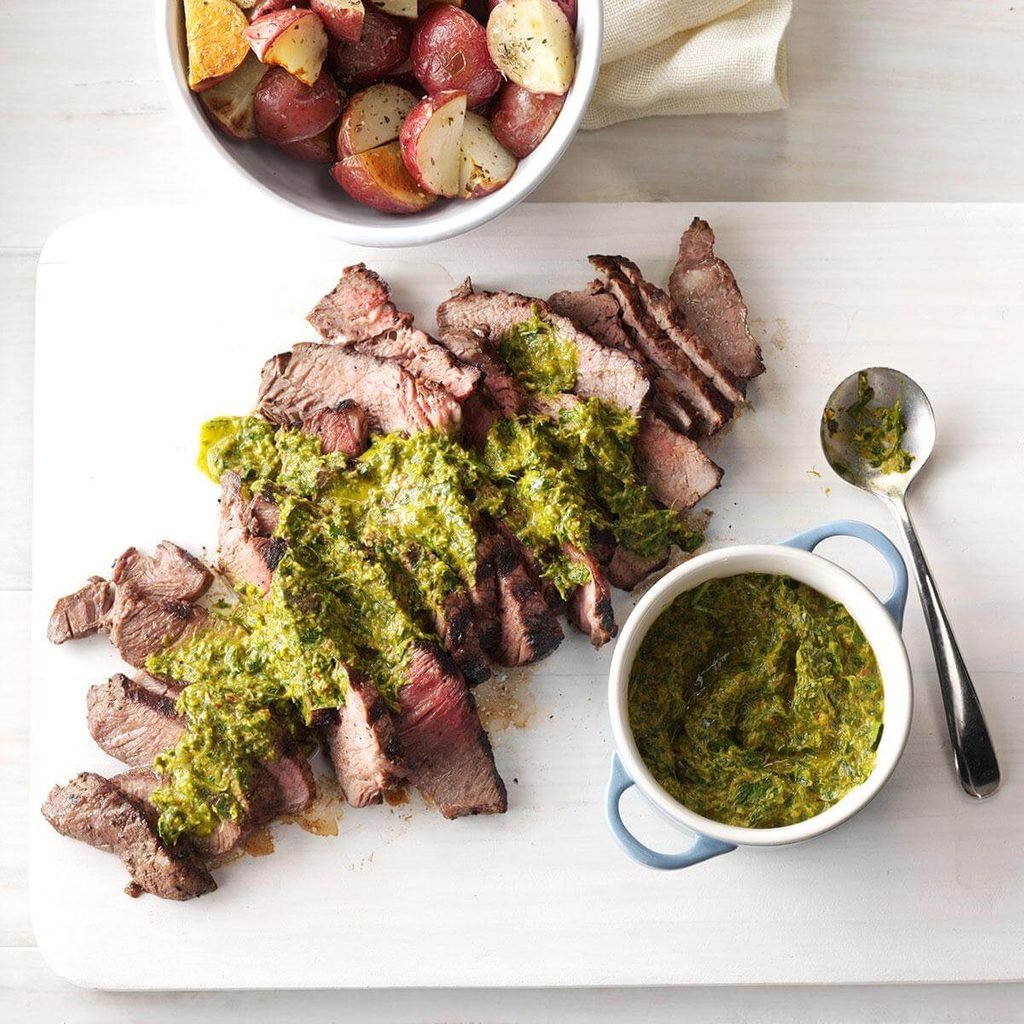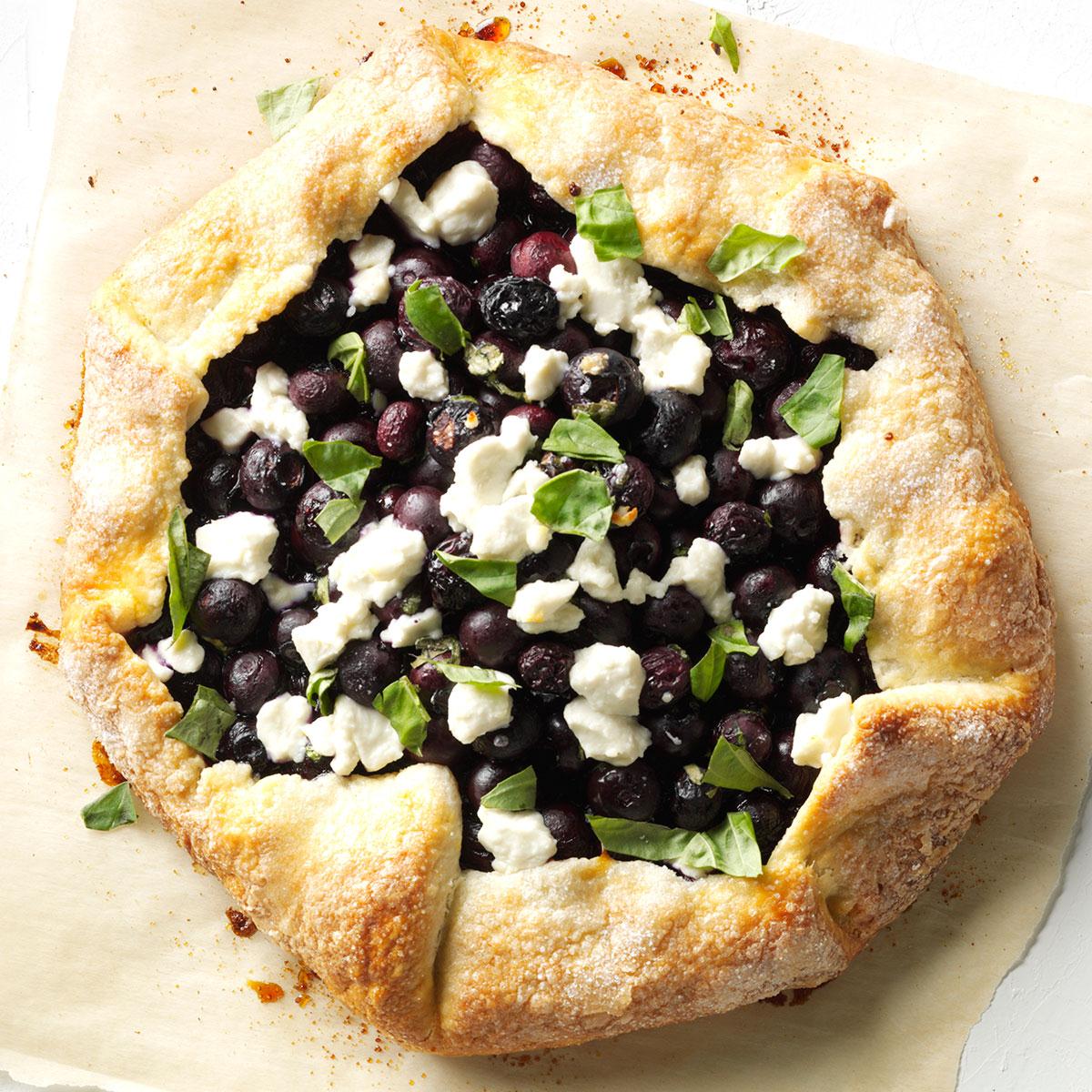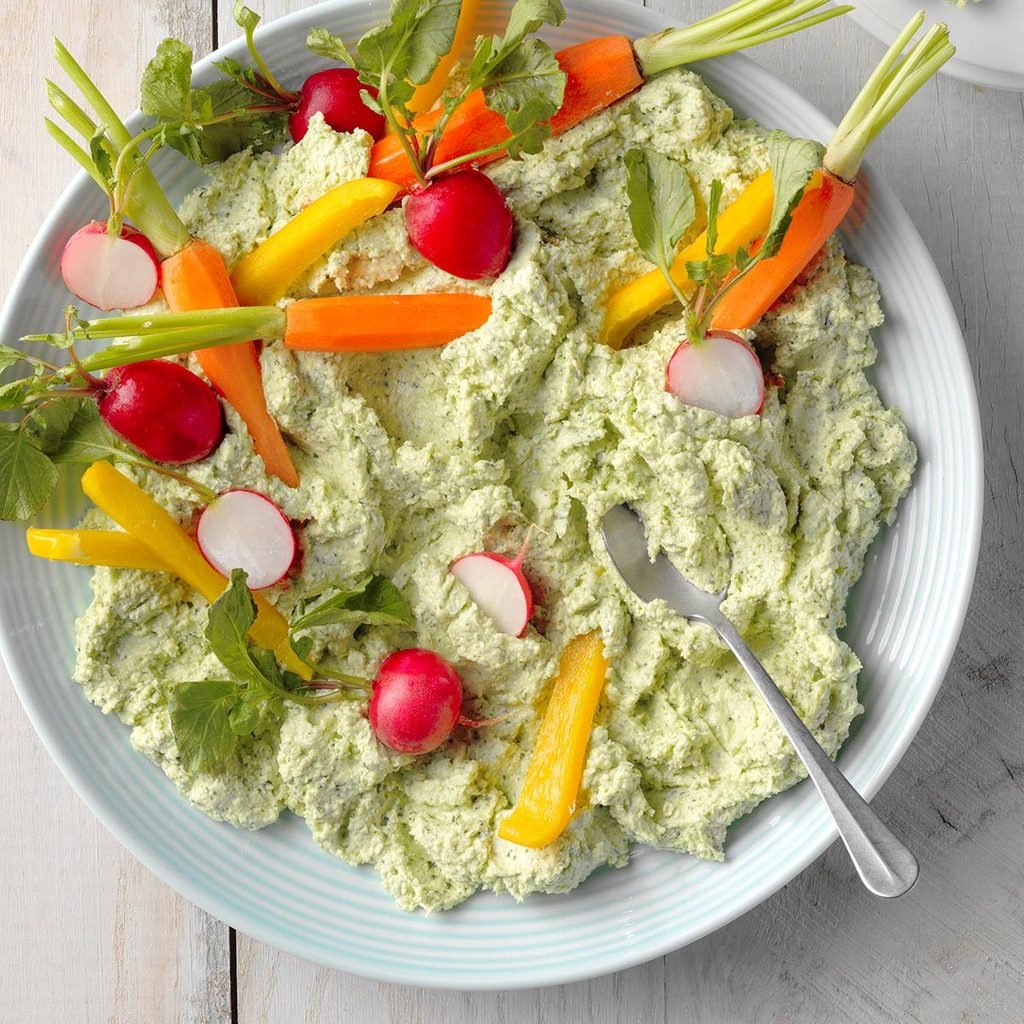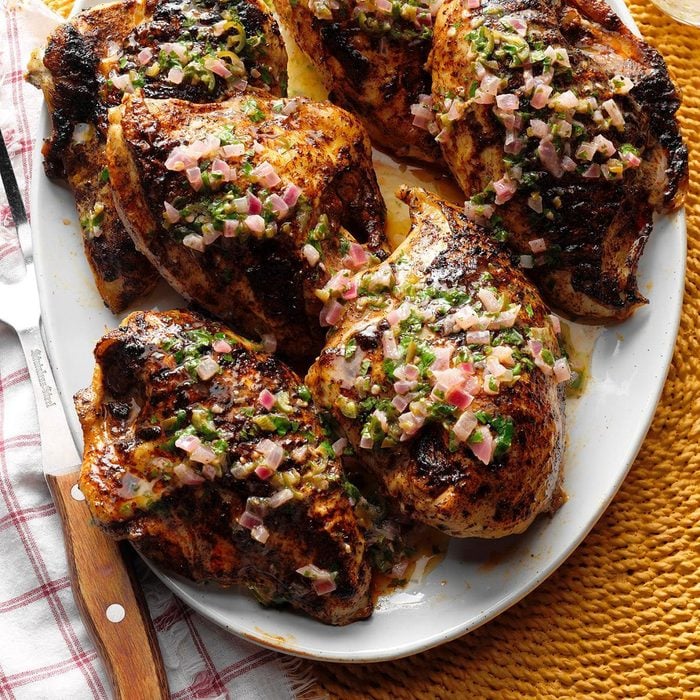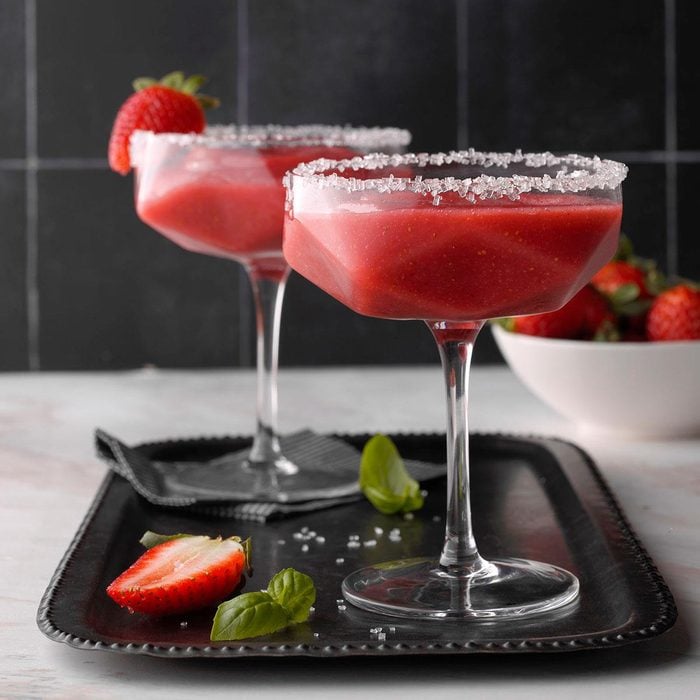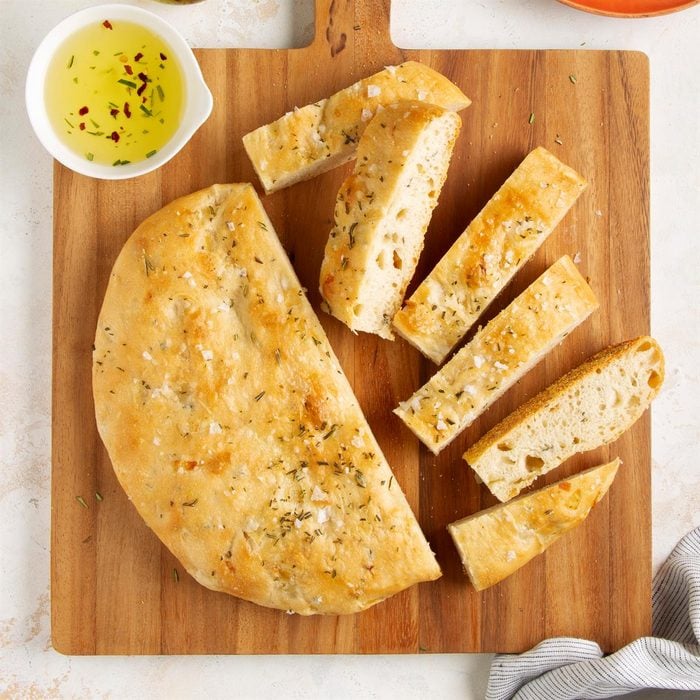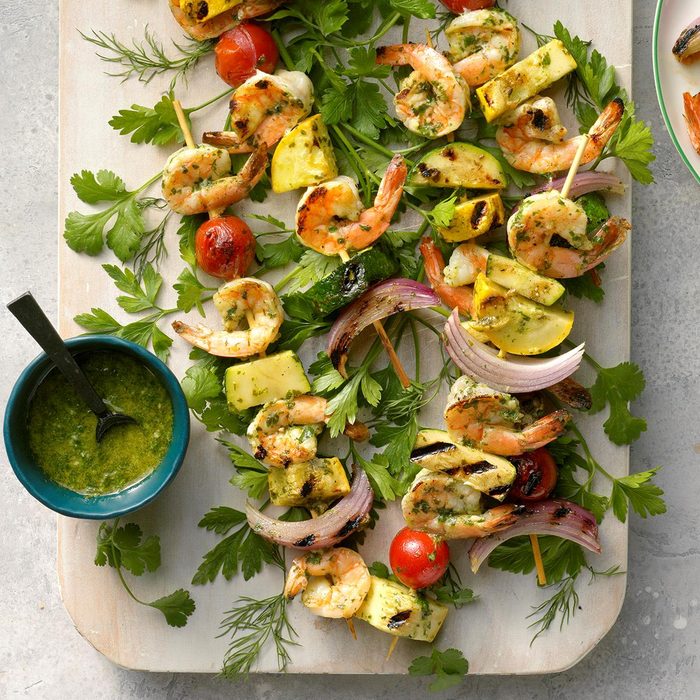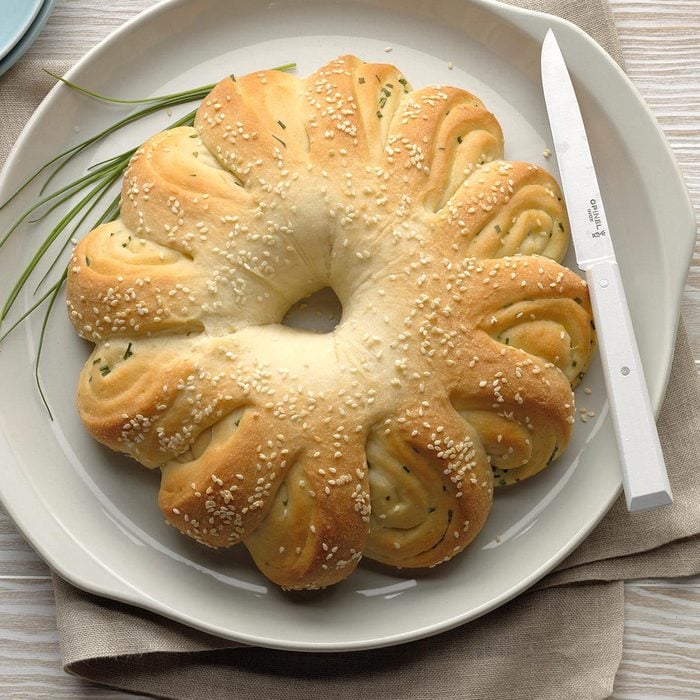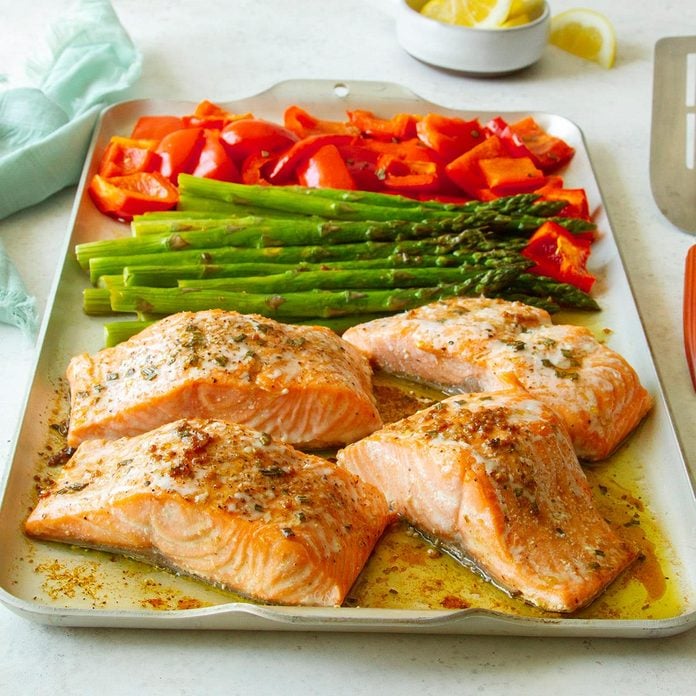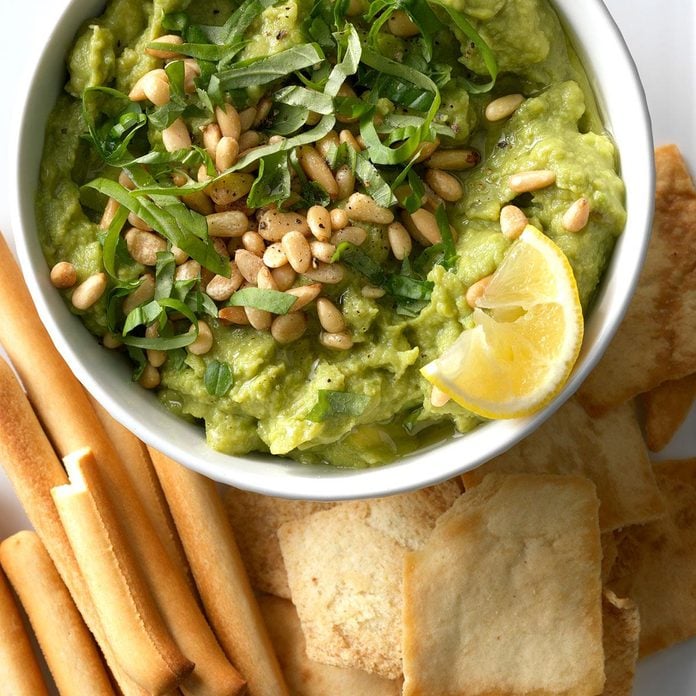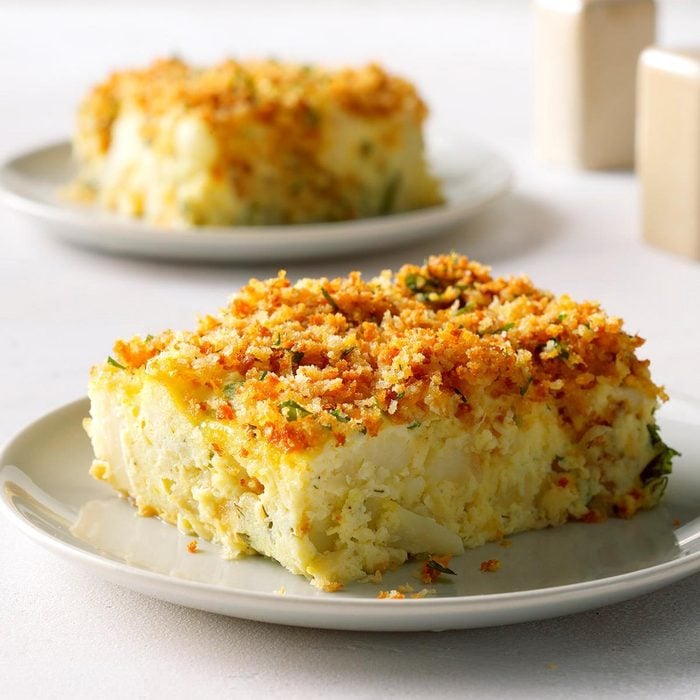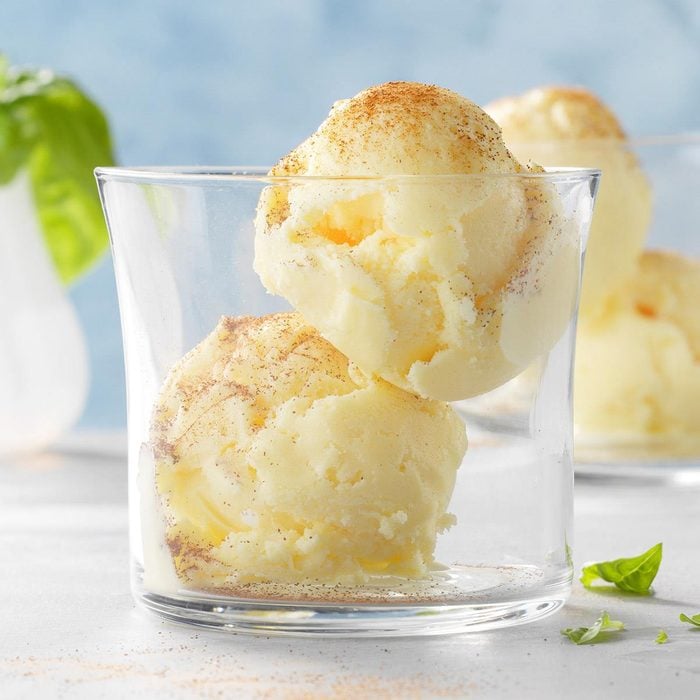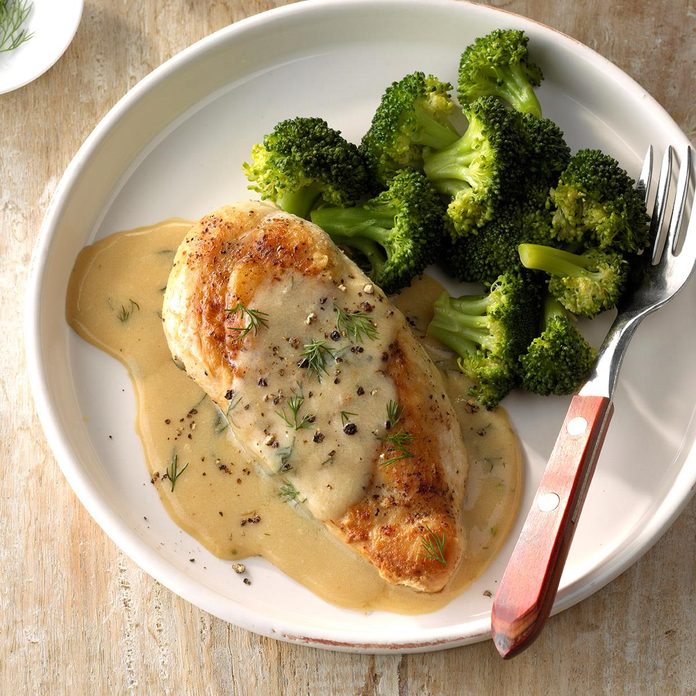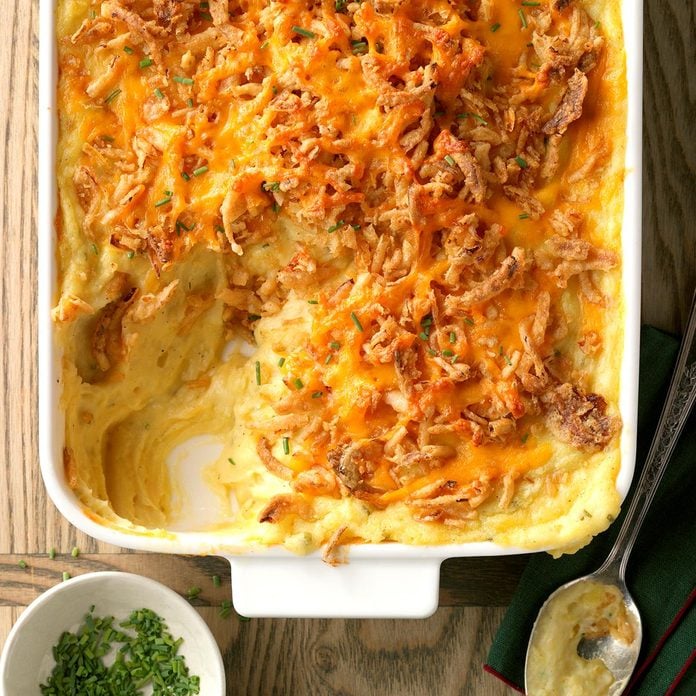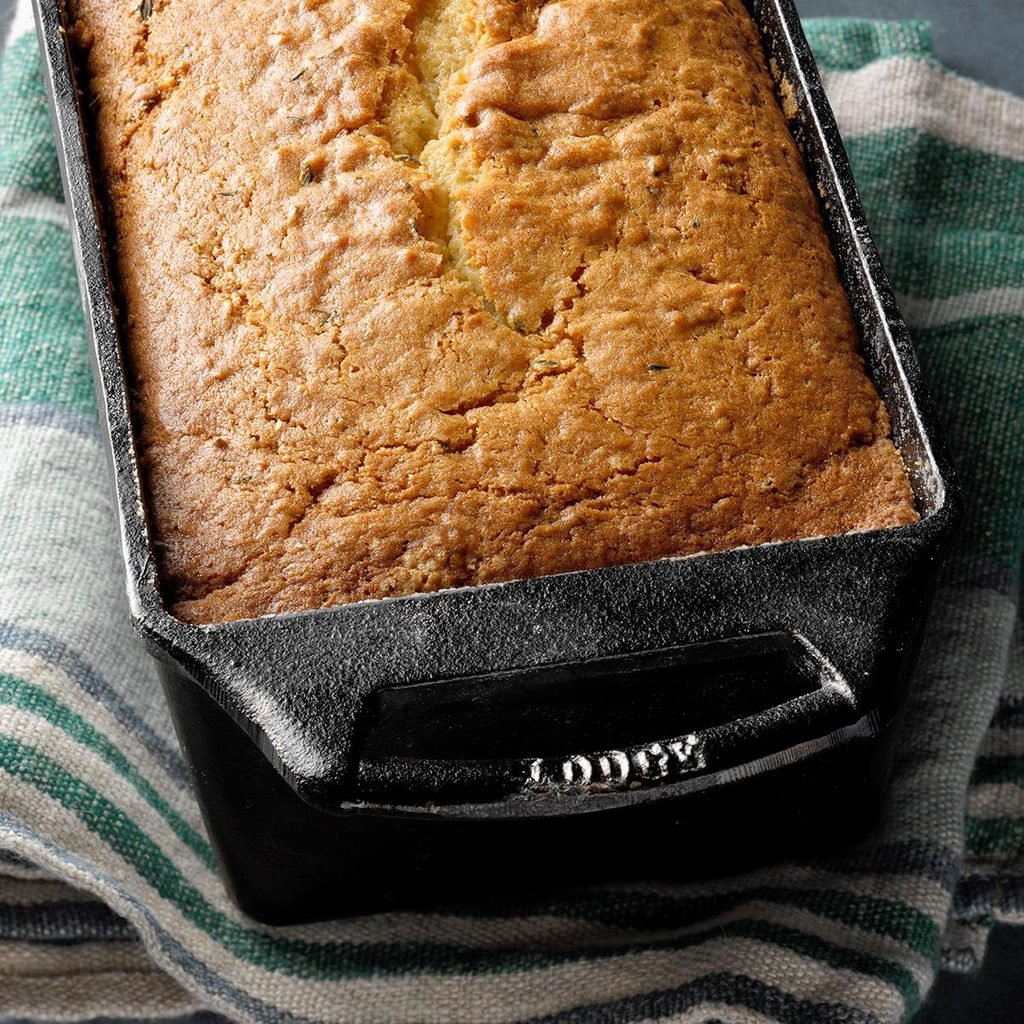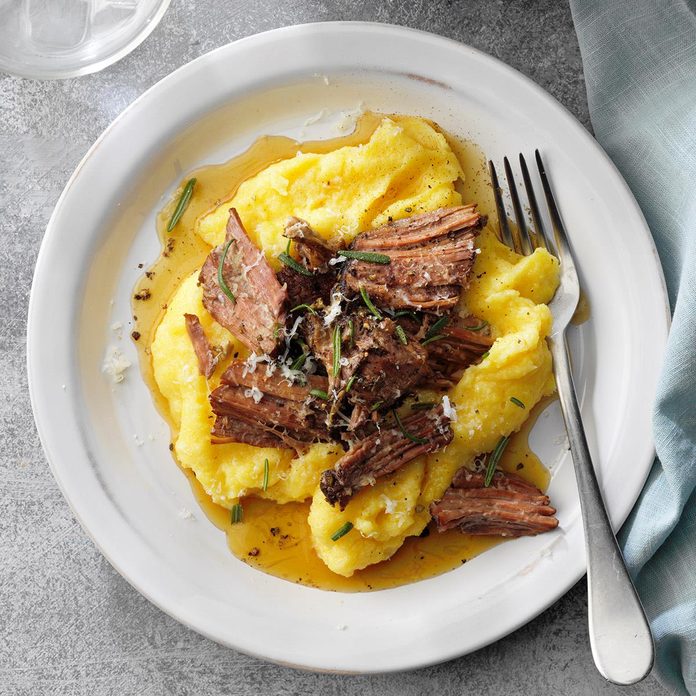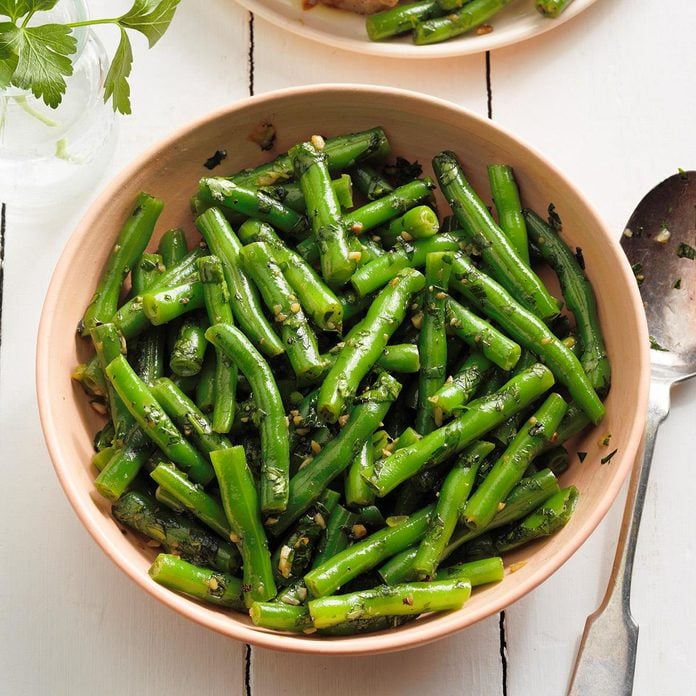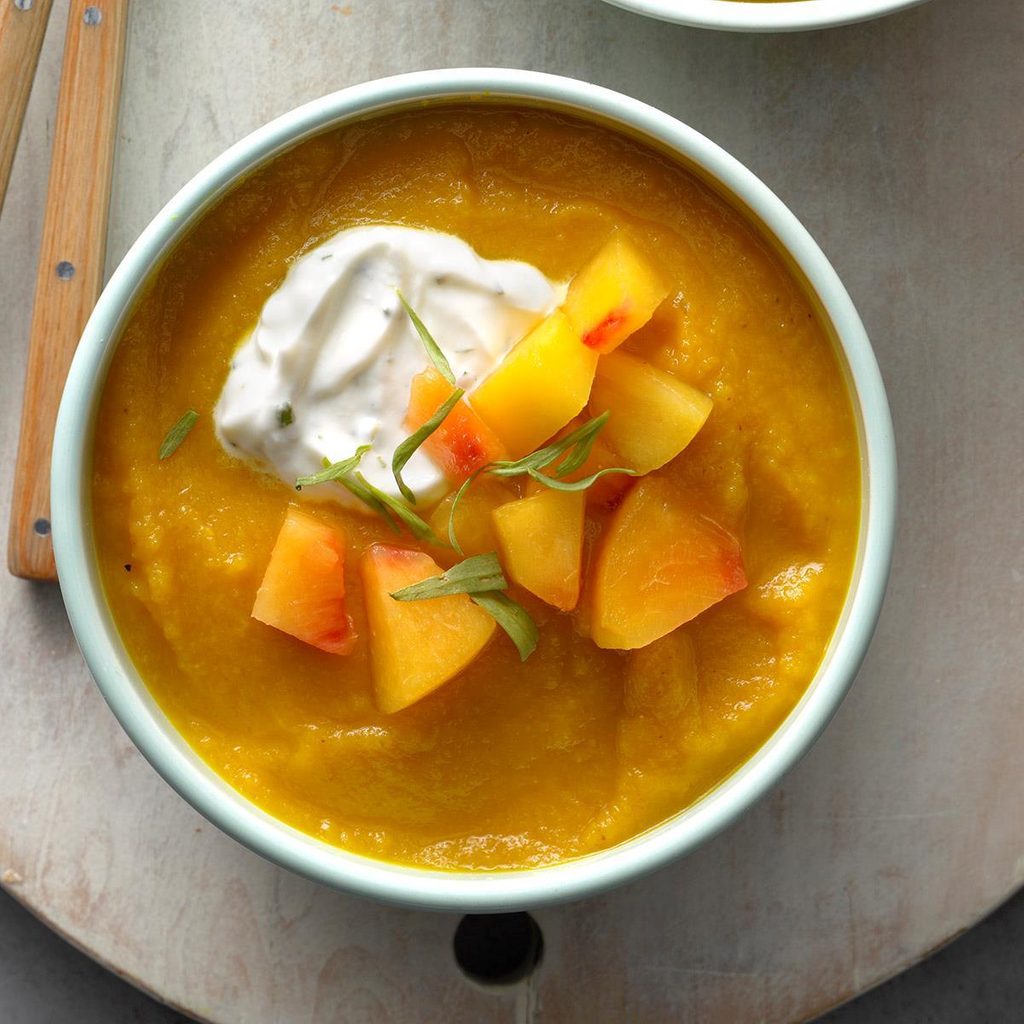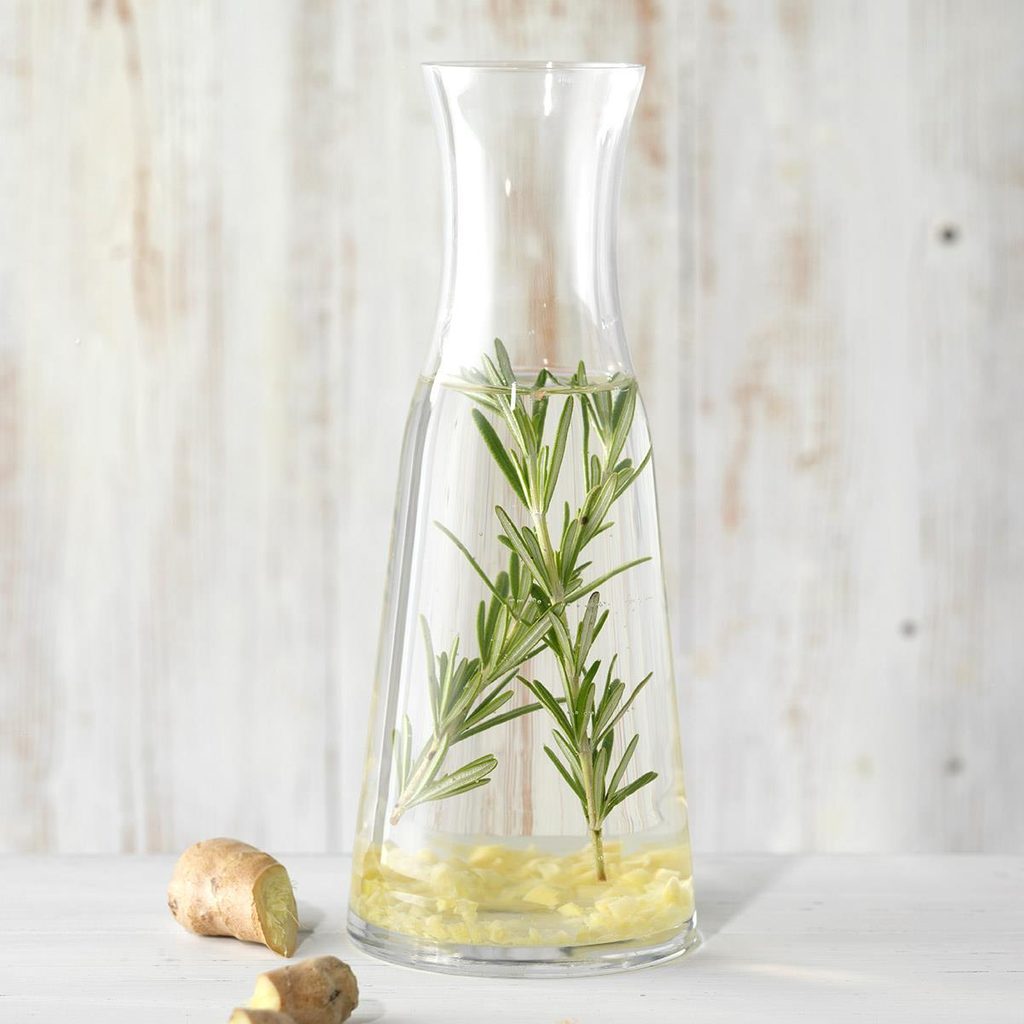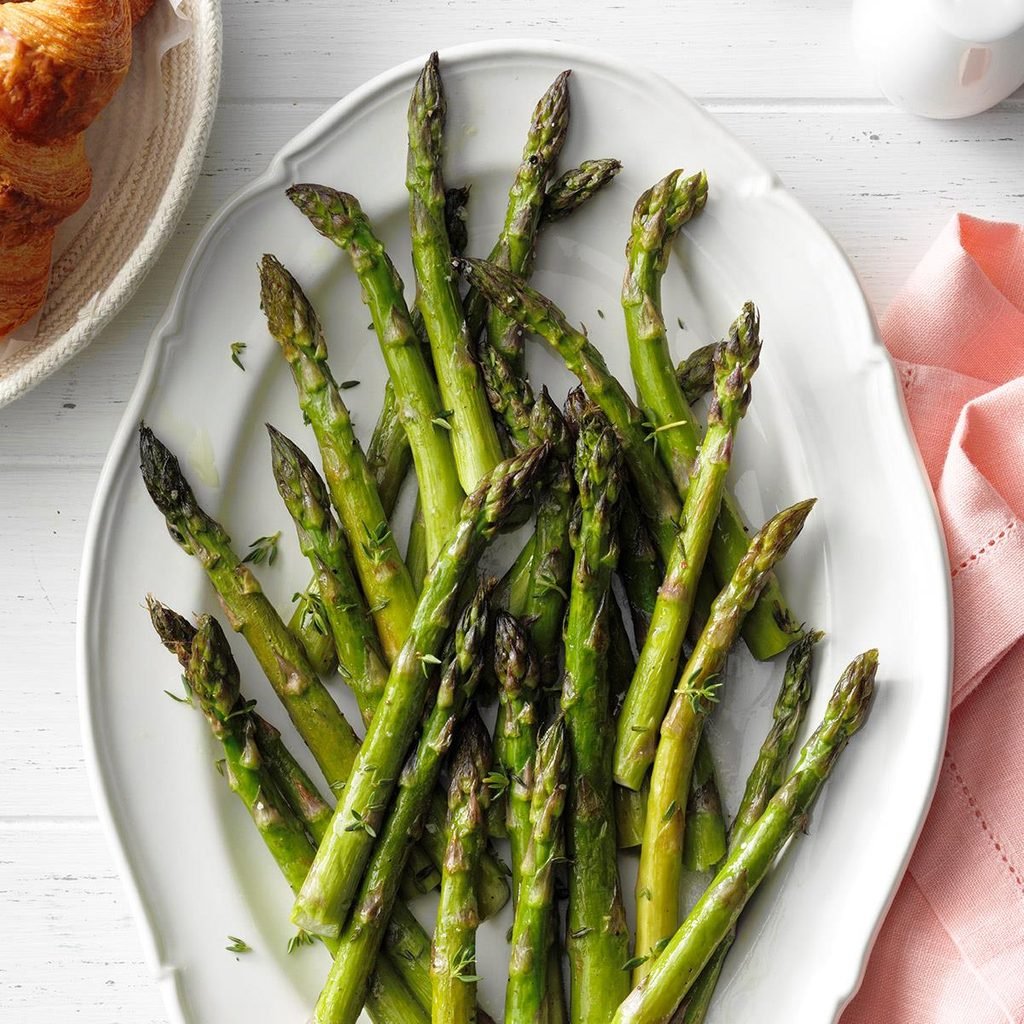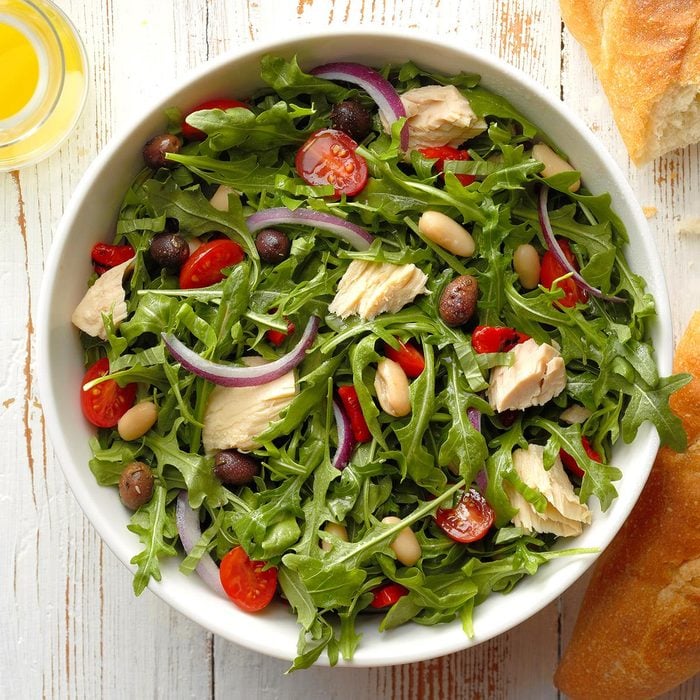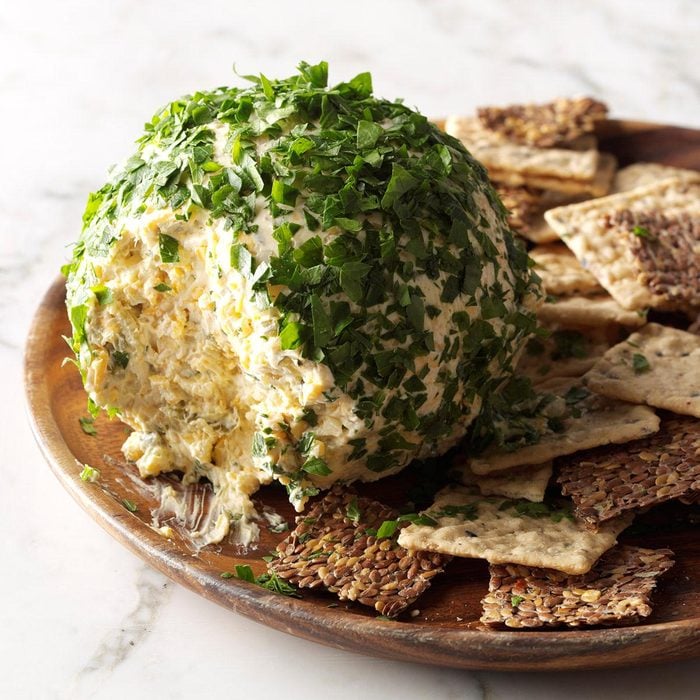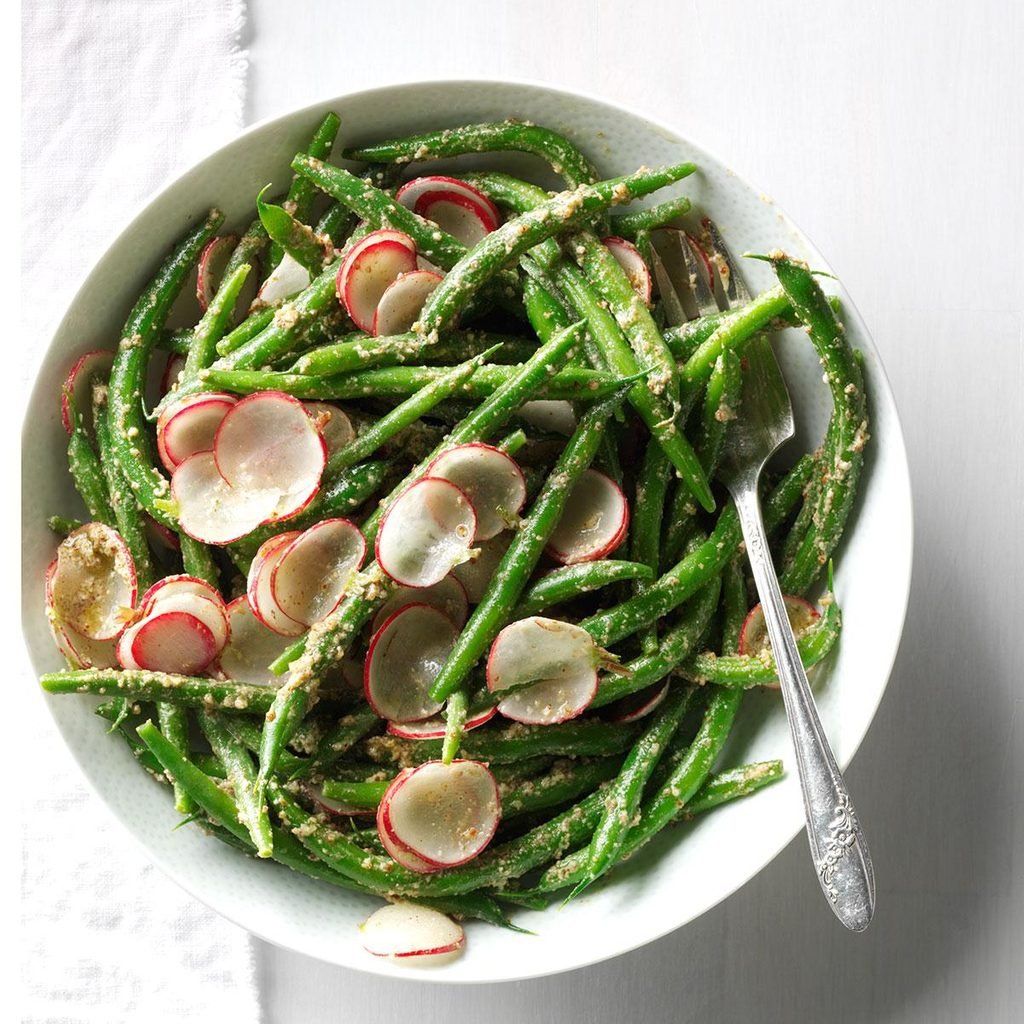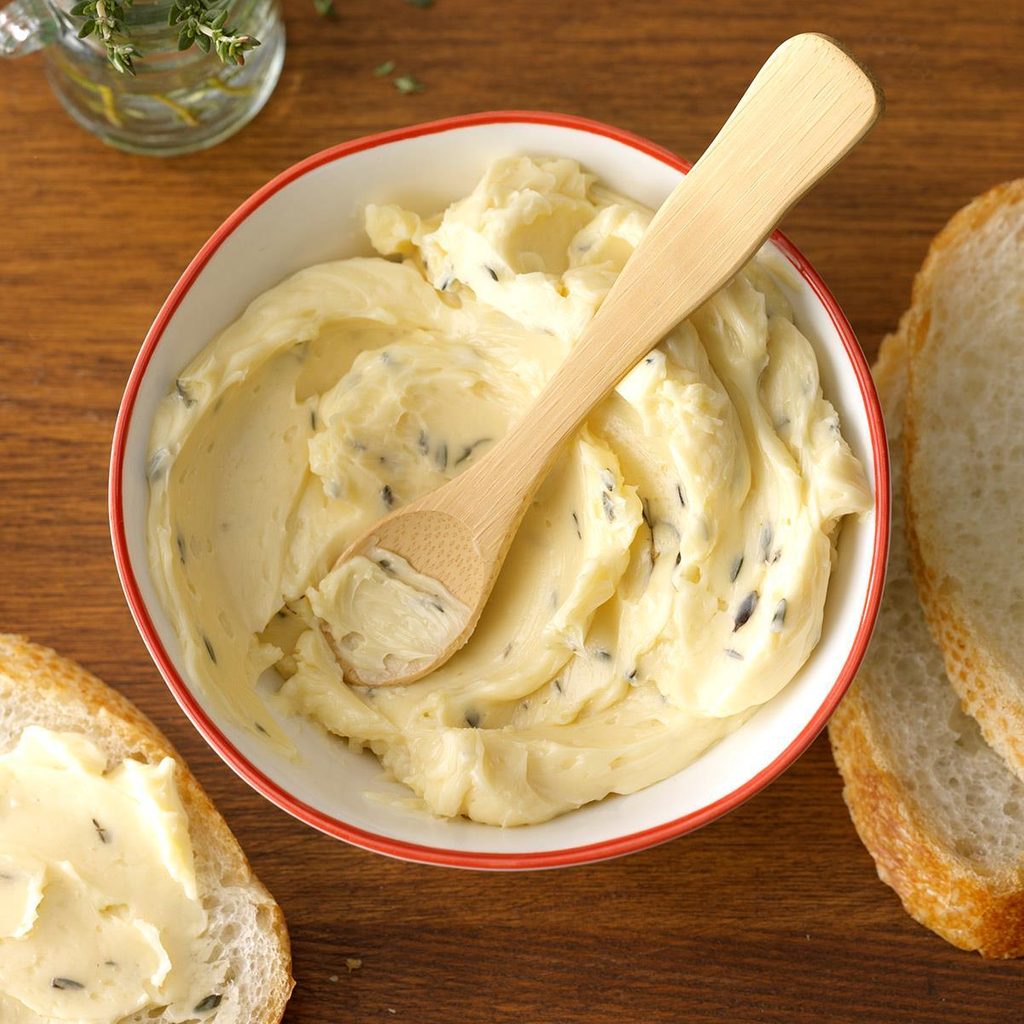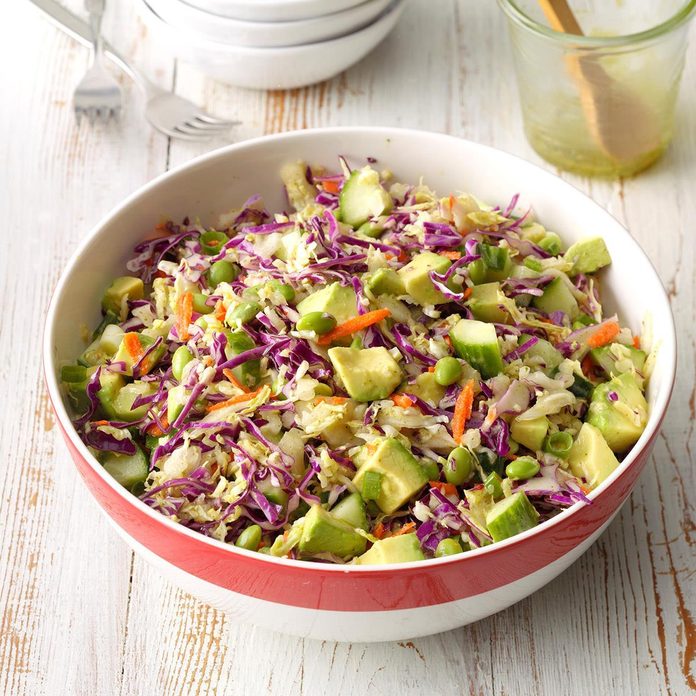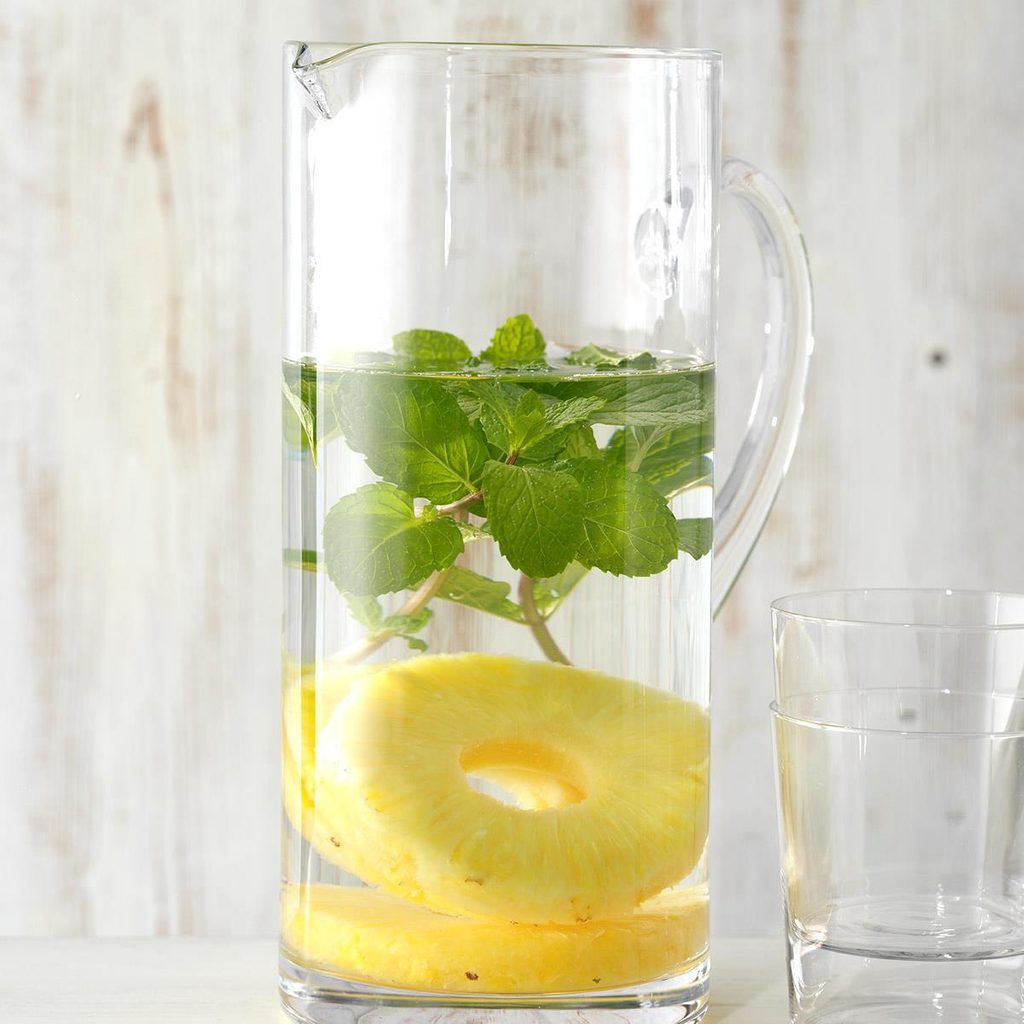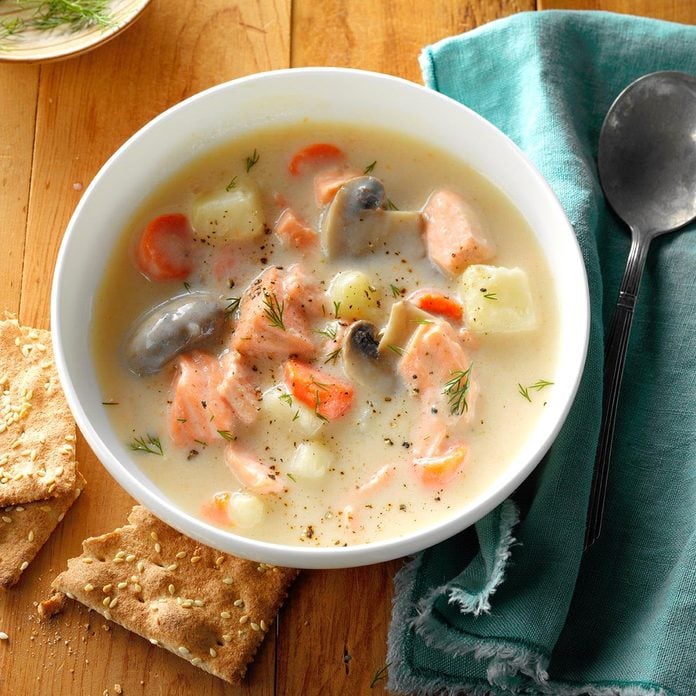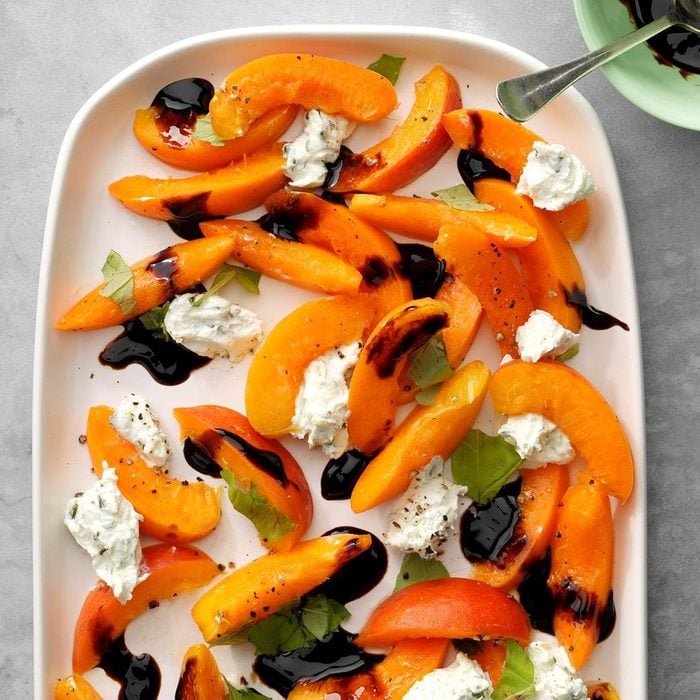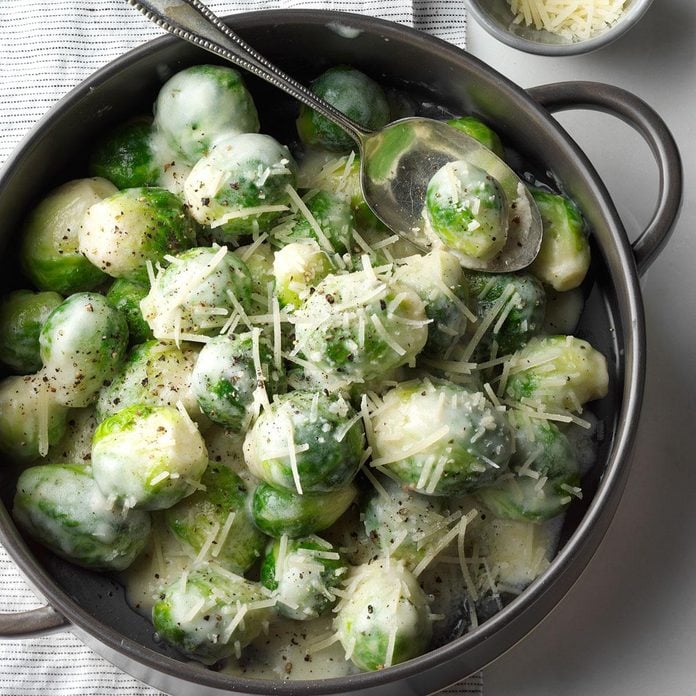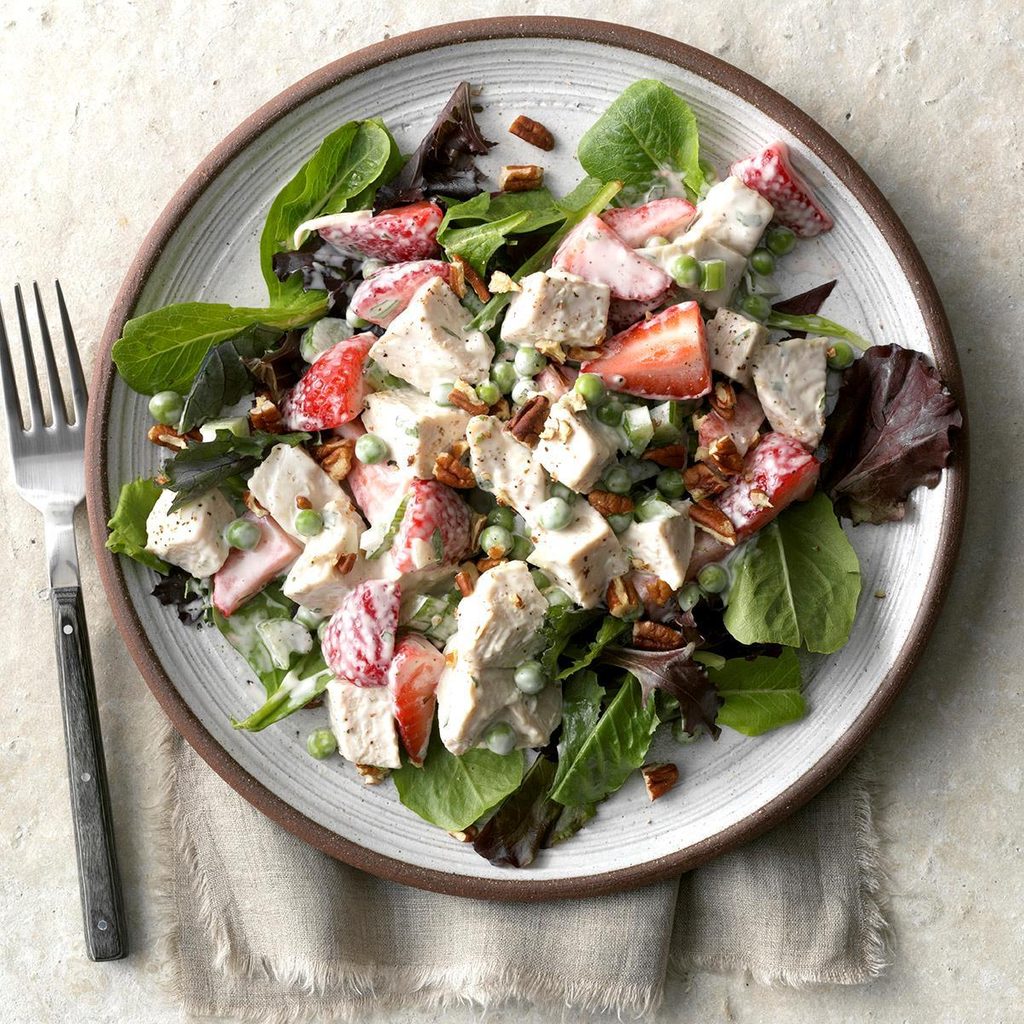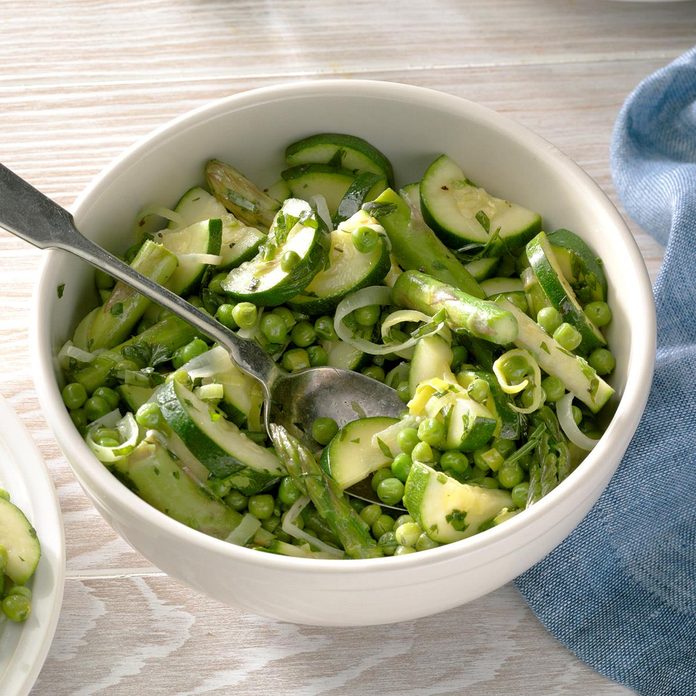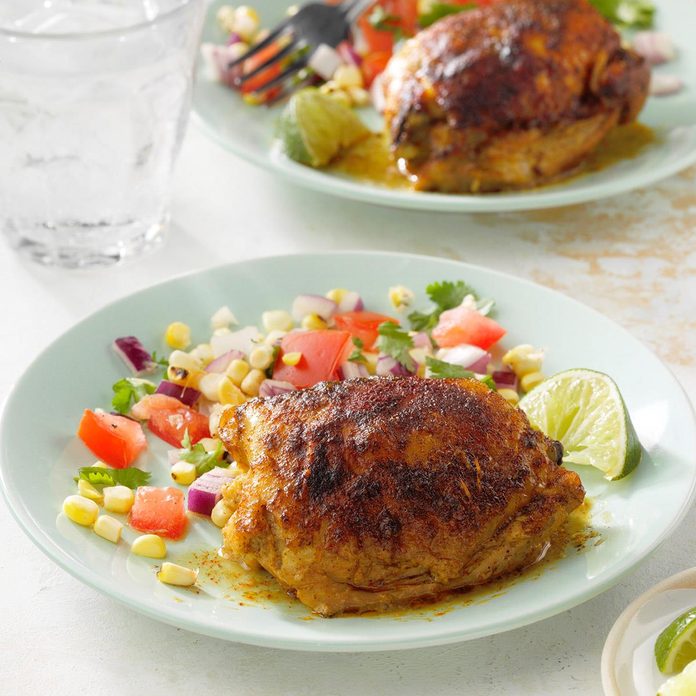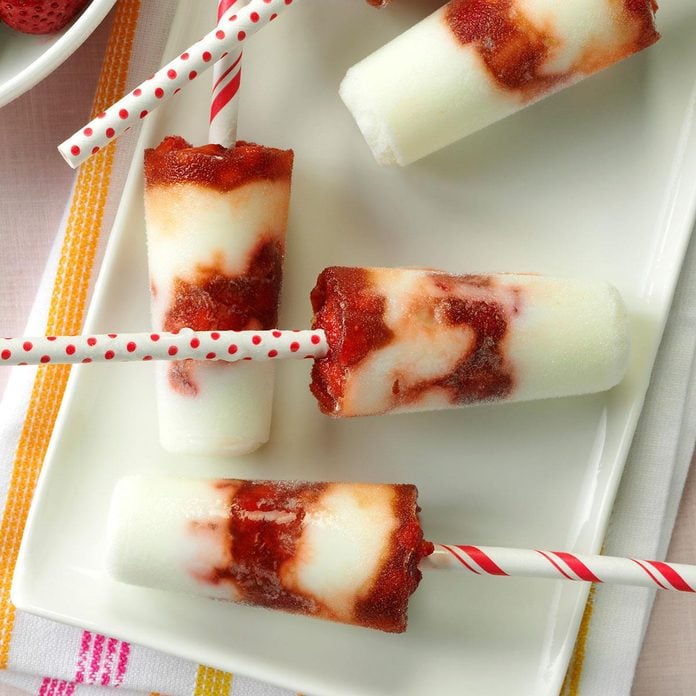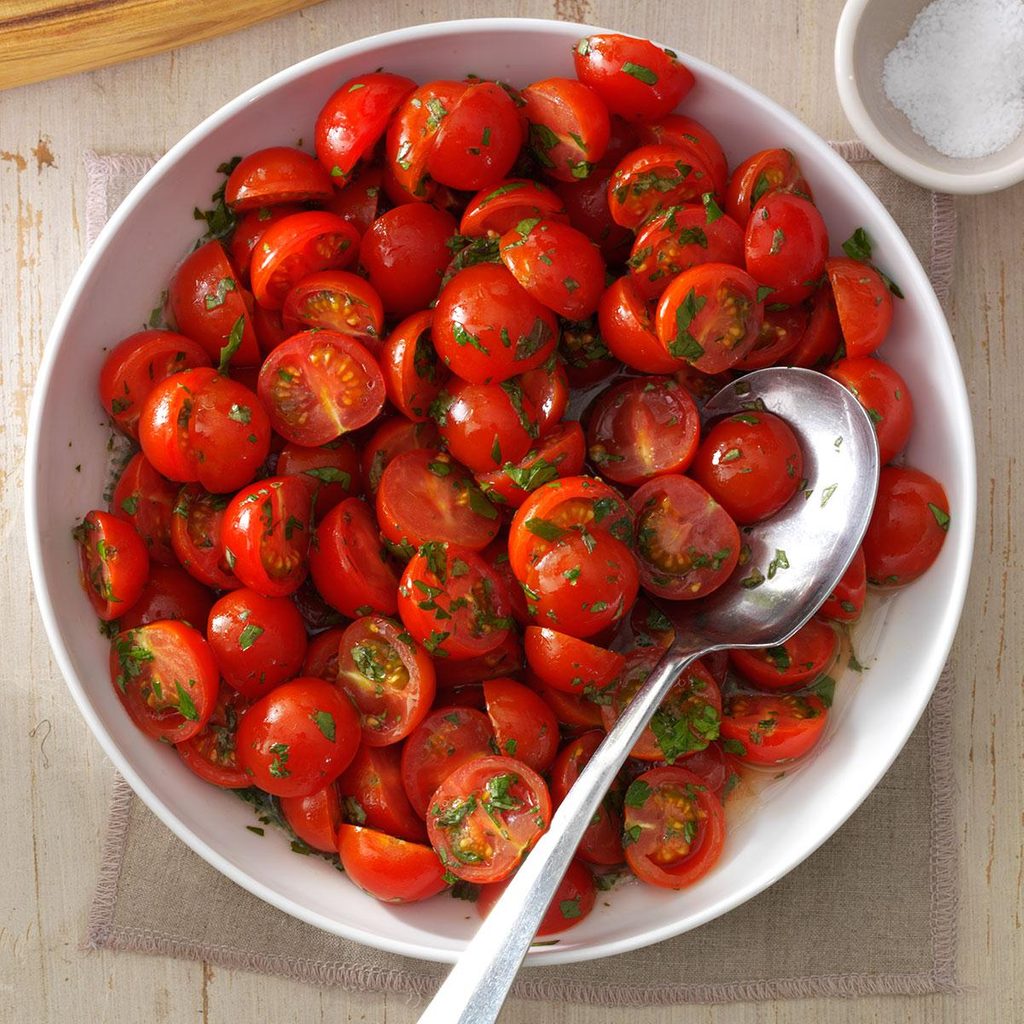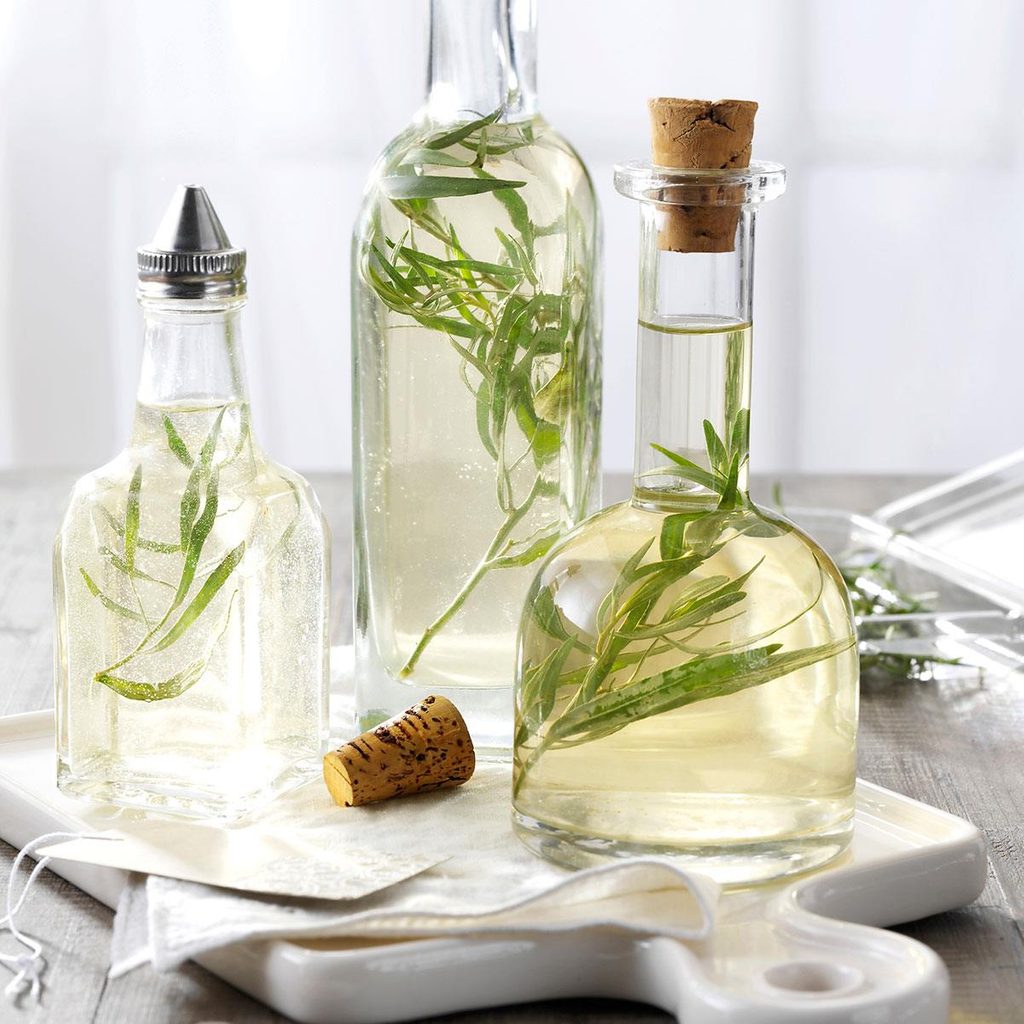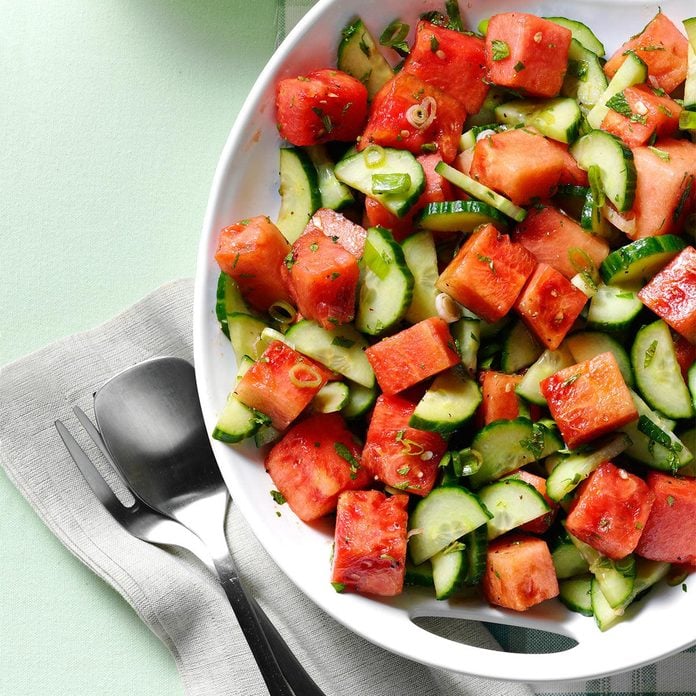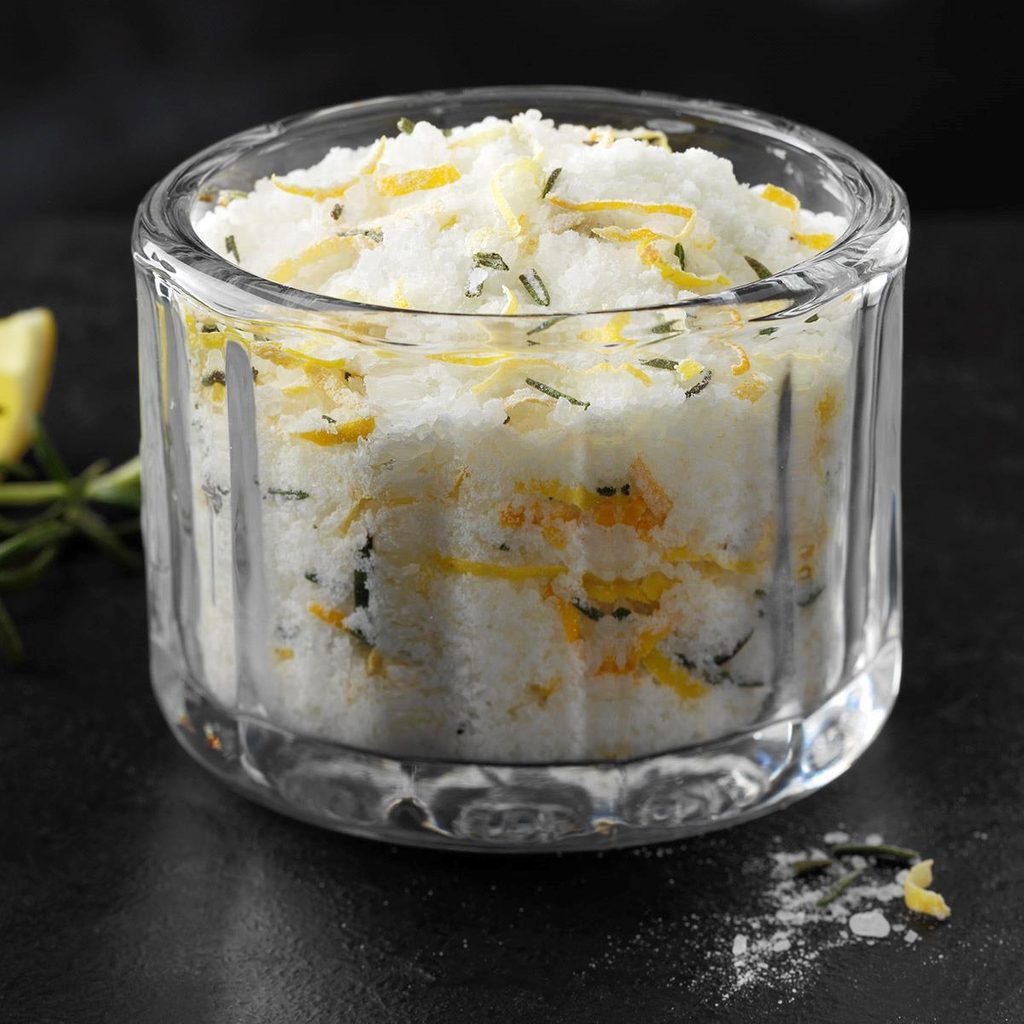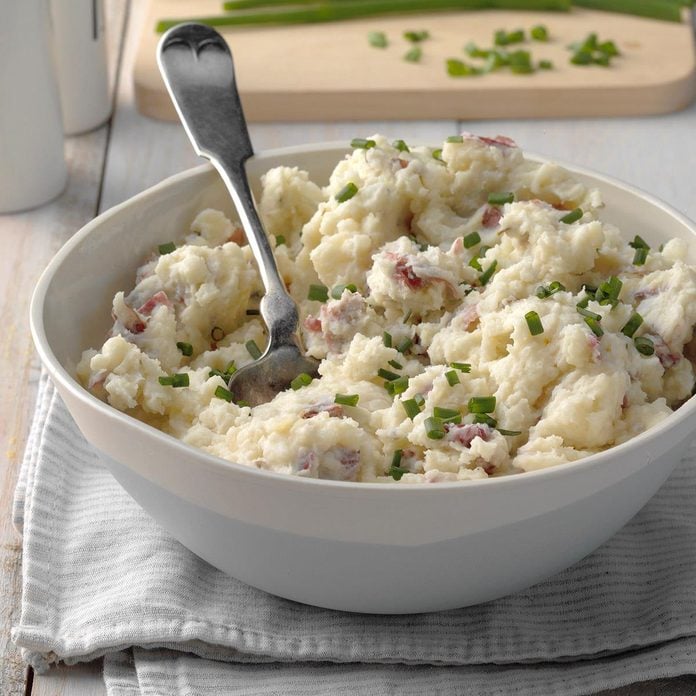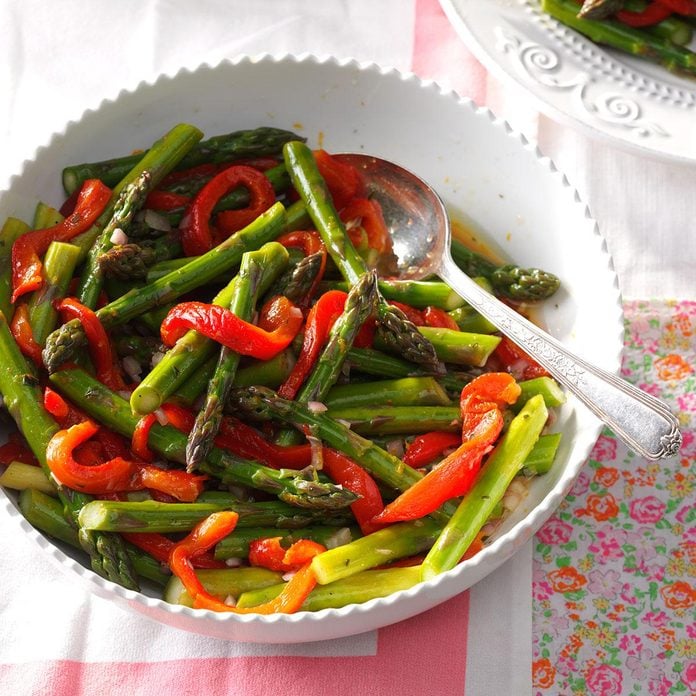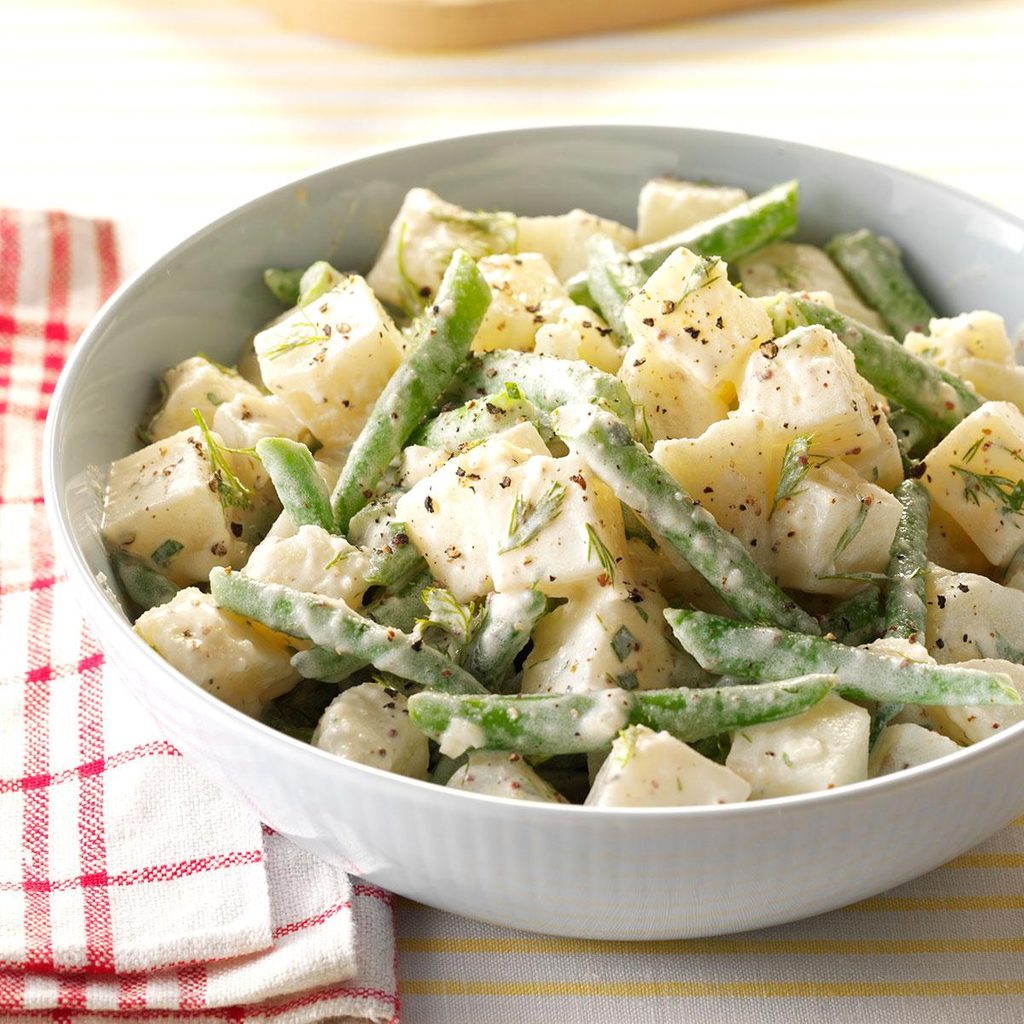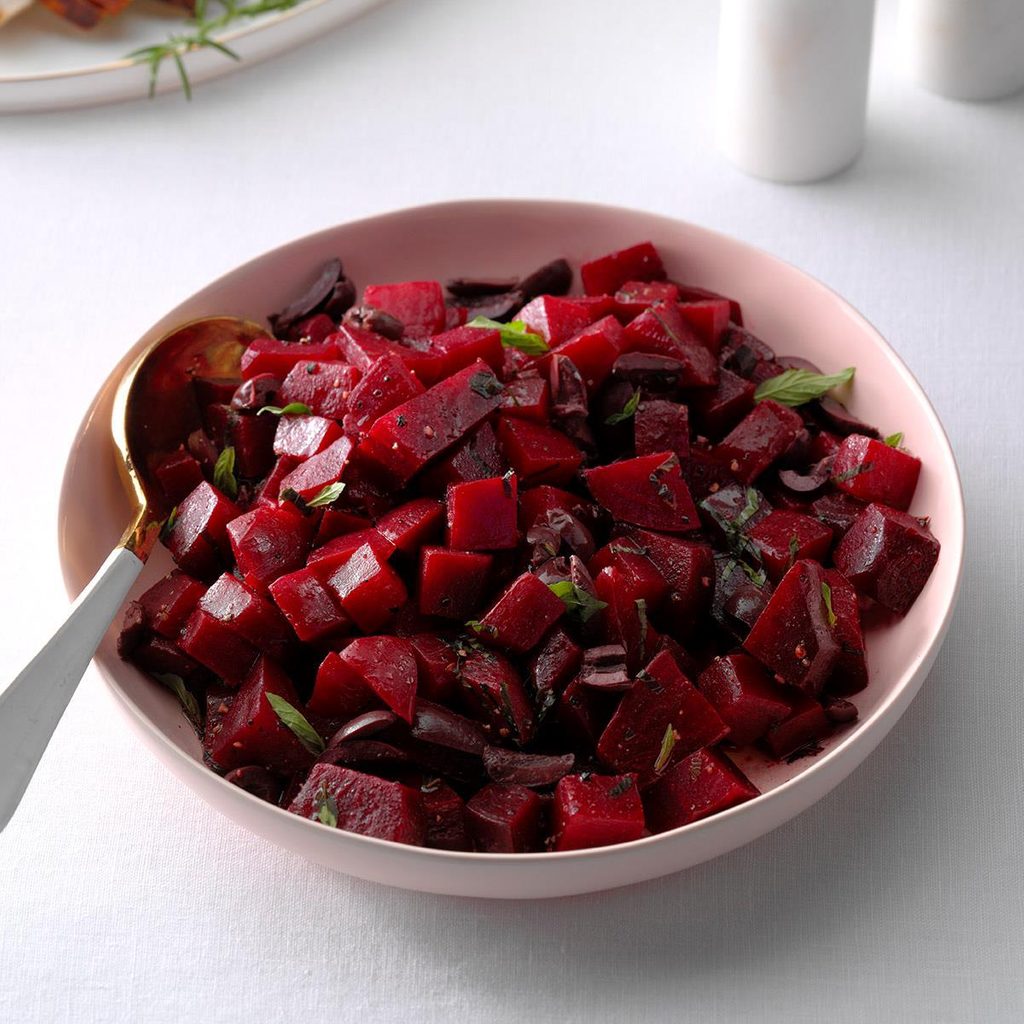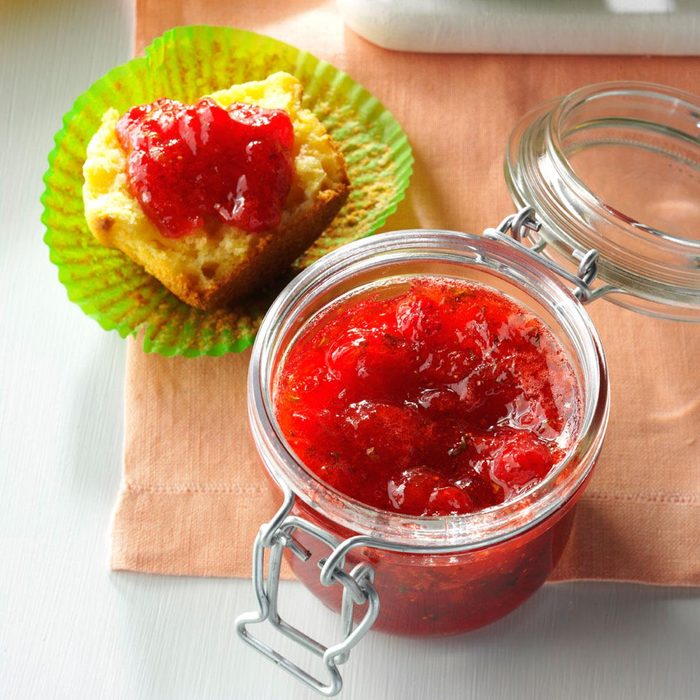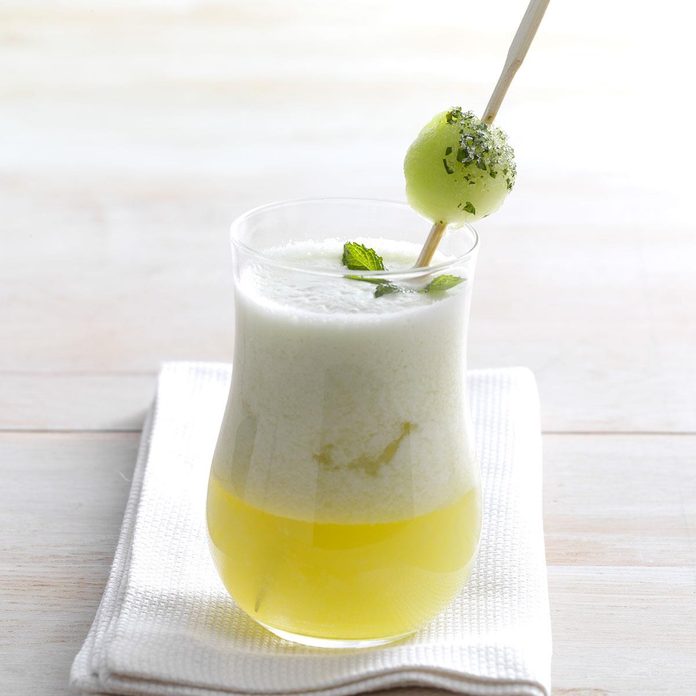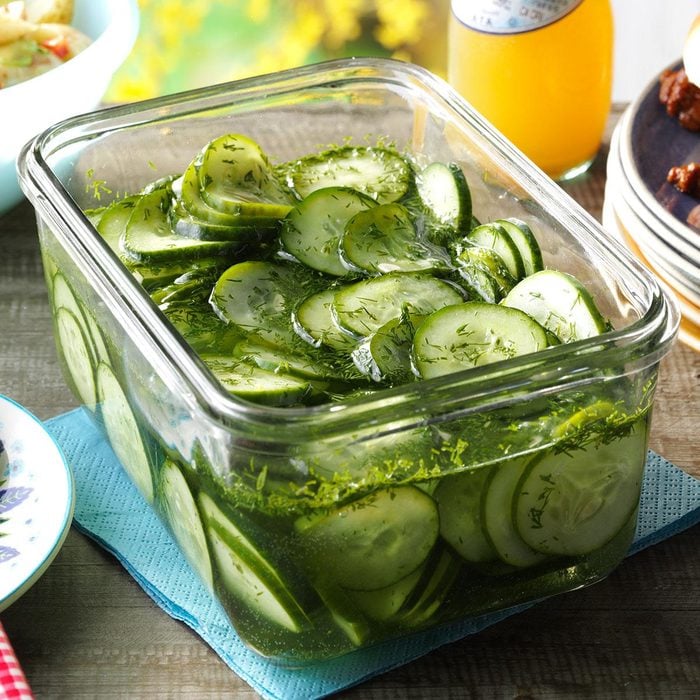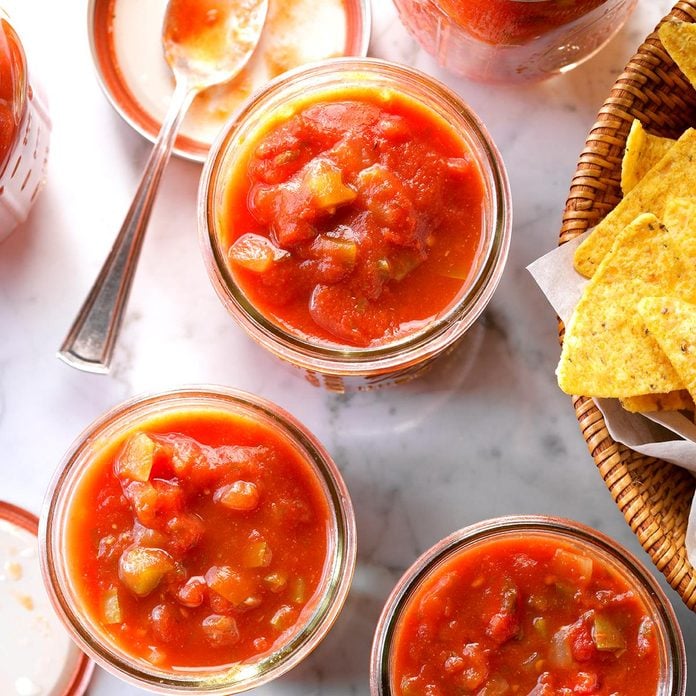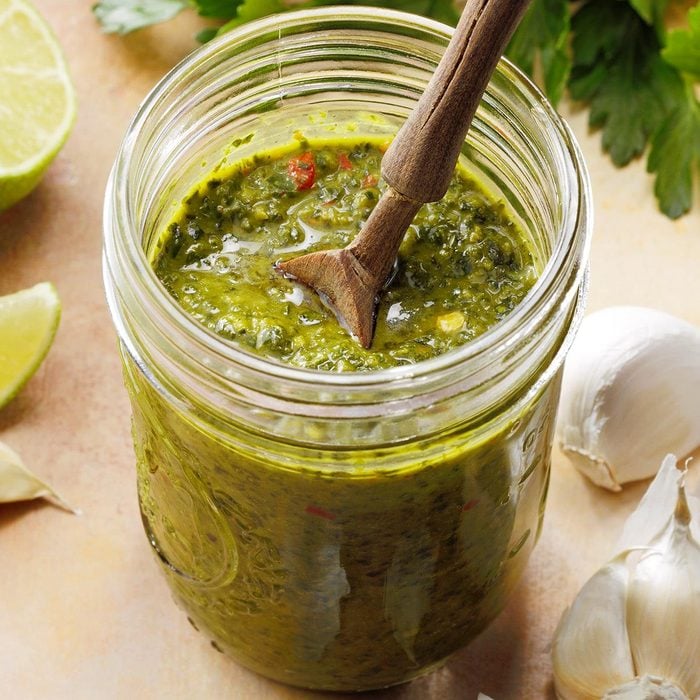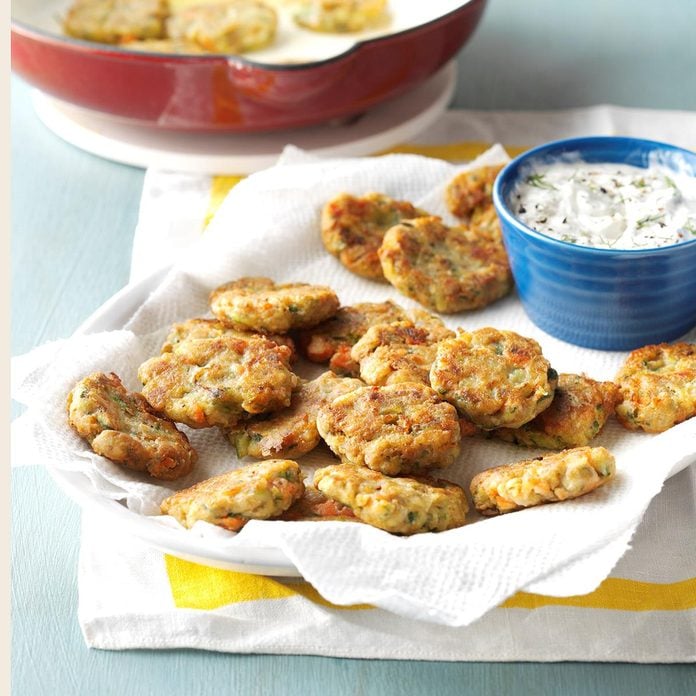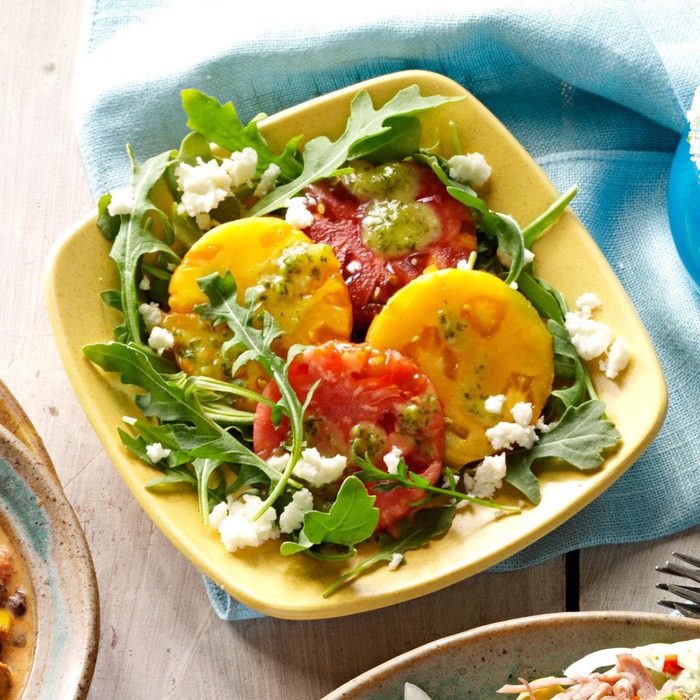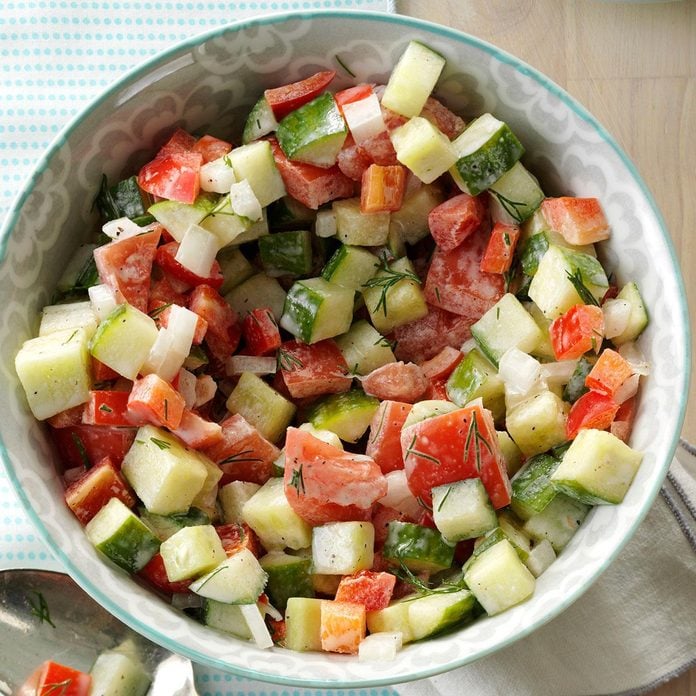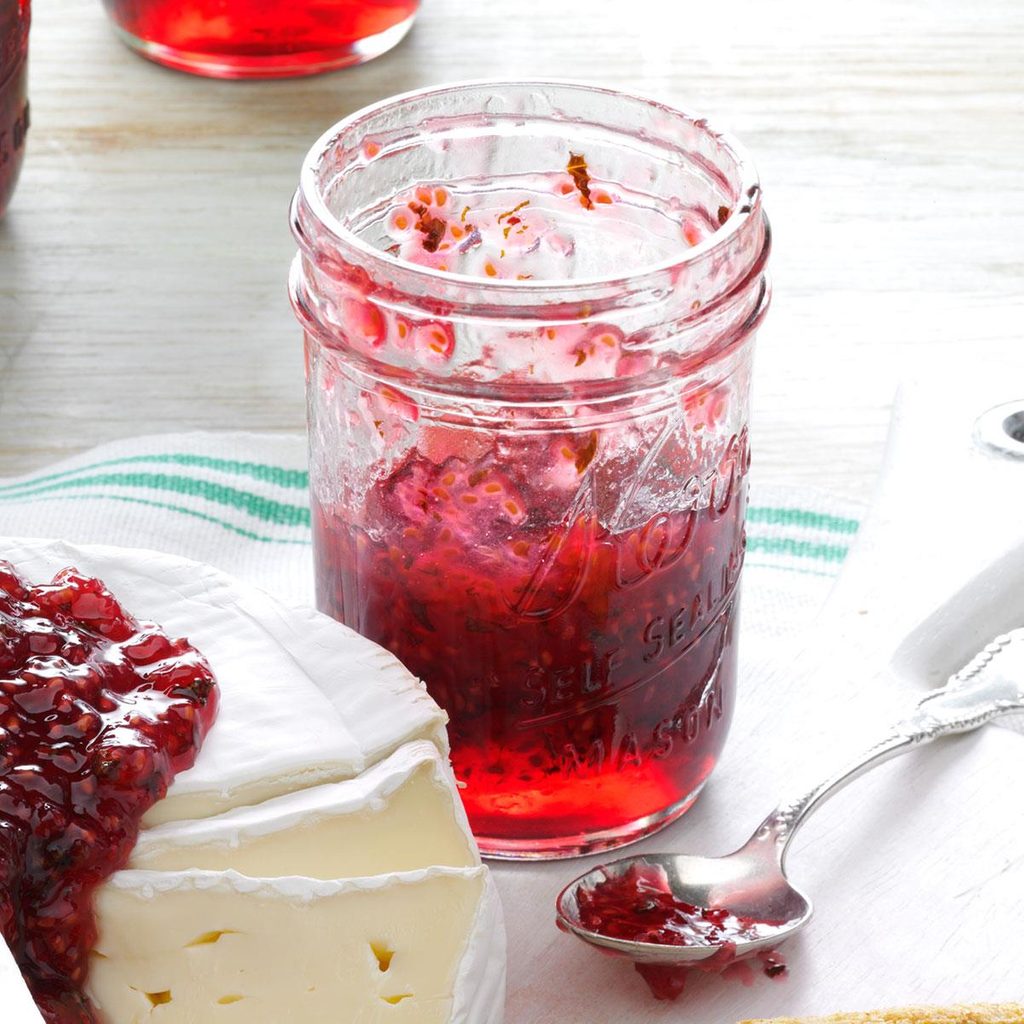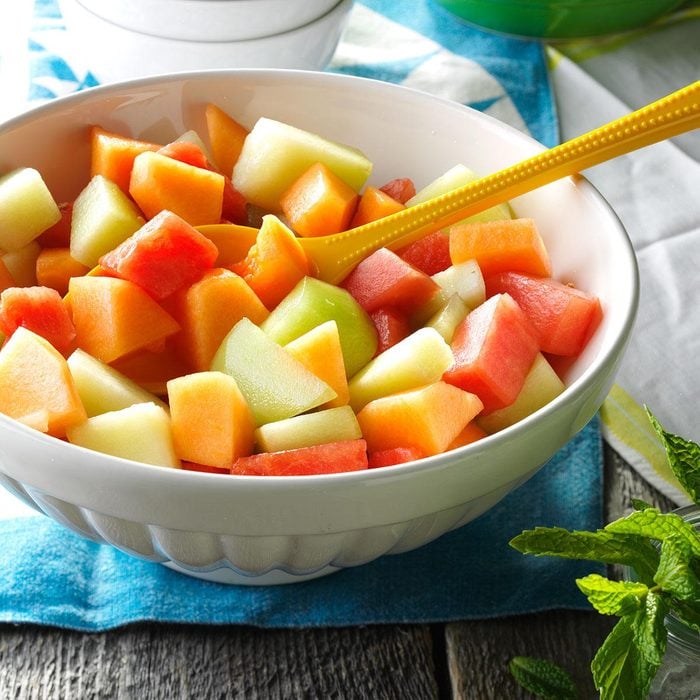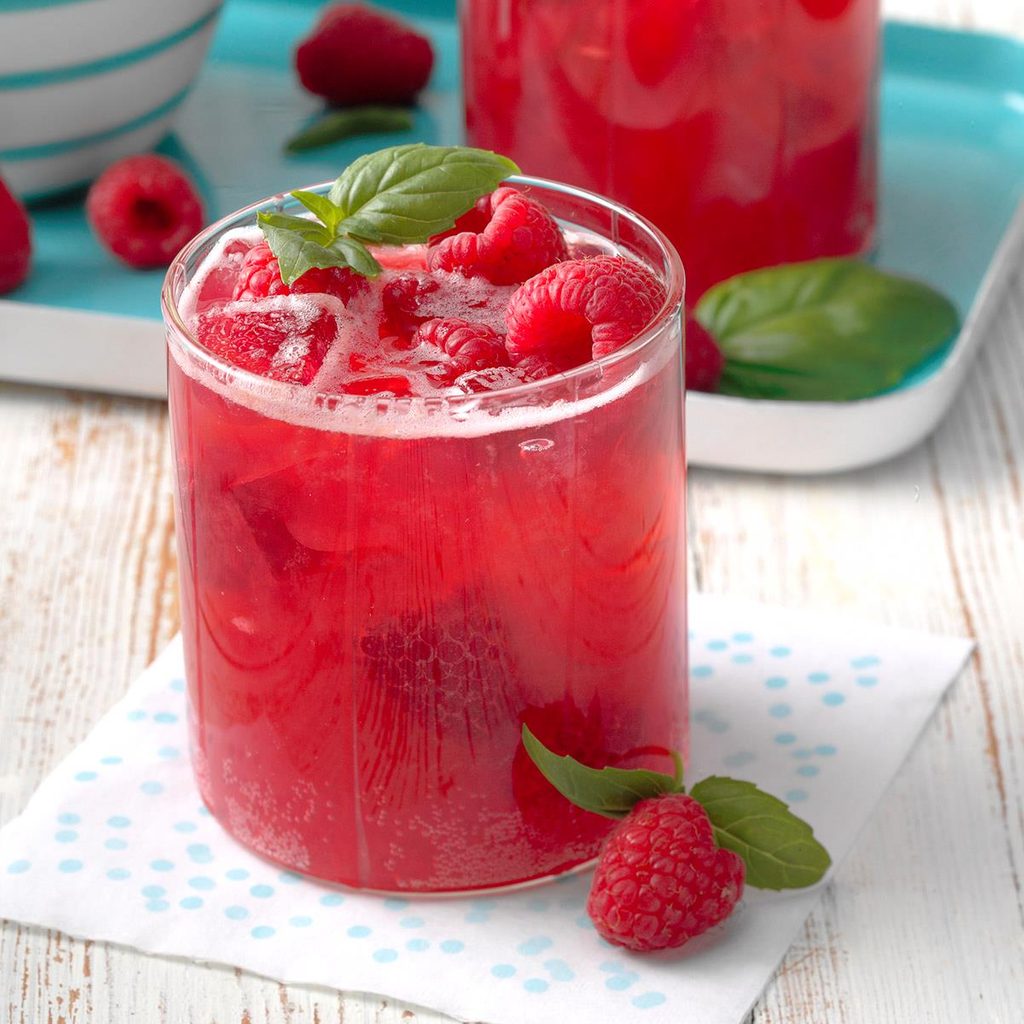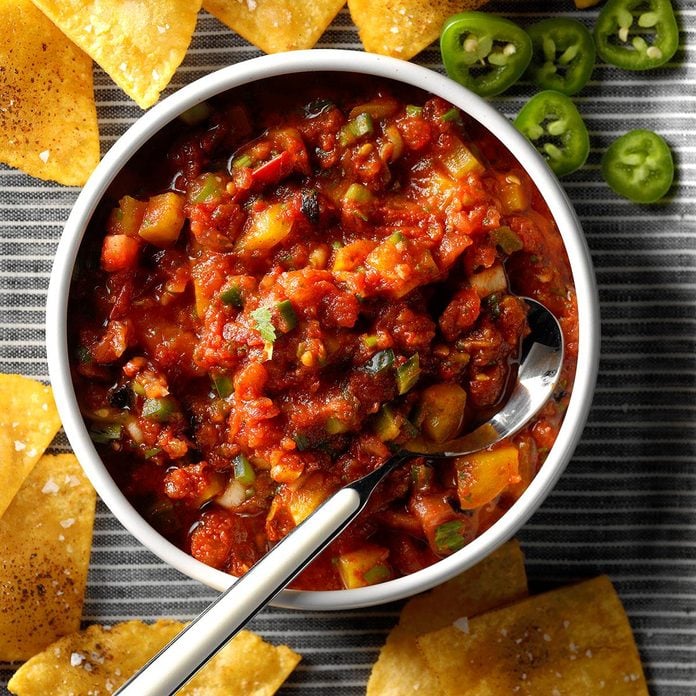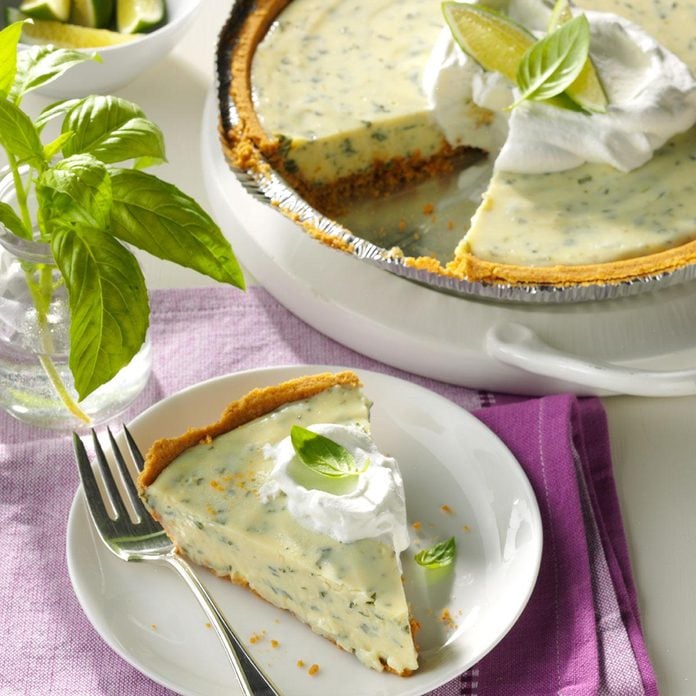Blueberry, Basil and Goat Cheese Pie
For a good friend moving to L.A., I made a blueberry goat cheese pie. Bake one, share it and start a precious memory. —Ashley Lecker, Green Bay, Wisconsin
Get Recipe
Herbed Feta DipGuests can’t get enough of this thick, zesty dip that bursts with fresh Mediterranean flavor. The feta cheese and fresh mint complement each other beautifully, creating the perfect sidekick for crunchy carrots, toasted pita chips, sliced baguettes or any other dipper you fancy.—Rebecca Ray, Chicago, Illinois
Spiced Grilled Chicken with Cilantro ButterThe spicy heat of the chicken pairs beautifully with the flavorful cilantro butter in this original recipe from Diane Halferty of Corpus Christi, Texas. We added spicy chocolate cinnamon cane sugar to the chicken, which complemented the other spices that are brushed over the chicken before grilling. —Taste of Home Test Kitchen
Frozen Strawberry-Basil MargaritaFresh, fruity and oh, so cool, this strawberry-basil margarita may be the perfect summer cocktail. —James Schend,
Taste of Home Deputy Editor
Rosemary FocacciaThe savory aroma of rosemary in this classic bread is simply irresistible. This rosemary focaccia bread tastes great as a side dish with any meal, as a snack or as a pizza crust.
Lime and Dill Chimichurri ShrimpChimichurri is a very popular condiment in Argentina and Uruguay and is most often used as a dipping sauce or a marinade for meats. My chimichurri shrimp version incorporates dill and lime, which give it a brighter flavor, making it ideal for spring and summer entertaining. —Bonnie Landy, Castro Valley, California
Creamy Chive RingsWhen I brought this savory ring to an extension luncheon, club members
let me know how much they enjoyed it. Next meeting I had to bring copies of the recipe for everyone there! —Pamela Schlickbernd West Point, Nebraska
Rosemary Salmon and VeggiesMy husband and I eat a lot of salmon. One night, while in a rush to get dinner on the table, I created this rosemary salmon meal. It's a keeper! You can also include sliced zucchini, small cauliflower florets or fresh green beans. —Elizabeth Bramkamp, Gig Harbor, Washington
Orange Blossom Mint RefresherI came up with this recipe because I'm not a fan of regular iced tea. This version has the perfect combination of freshness and sweetness, and the orange blossom water gives the tea a distinctive flavor. People always request the recipe. —Juliana Gauss, Centennial, Colorado
Pine Nut and Basil GuacamoleGuacamole is typically a Mexican dish, but that doesn’t mean you can't try to make it with other global flavors. For an Italian-inspired basil guacamole recipe, top it off with toasted pine nuts and fresh herb ribbons. You can also substitute the traditional lime for lemon juice.—
Taste of Home Test Kitchen
Cauliflower Dill KugelI enjoy cauliflower and kugel, so it made sense to combine the two into one special dish. The ricotta cheese adds a distinctive creaminess and lightness. —Arlene Erlbach, Morton Grove, Illinois
Cinnamon-Basil Ice CreamI started experimenting with herbal ice creams when I was teaching classes at our local college. Not only were the ice creams popular with my students, but my family loved them as well! One of our favorites is made with a variety of basil called cinnamon basil; however, unless you grow the variety yourself, it can be rather difficult to find. I decided to try to re-create the flavor, and this delicious basil ice cream recipe is the result! —Sue Gronholz, Beaver Dam, Wisconsin
Chicken and Broccoli with Dill SauceI've had this chicken and broccoli recipe for so many years, I don't remember when I first made it. Serve it with a side of couscous or rice for a complete meal, or add some sliced mushrooms or carrots for extra veggies. —Kallee Krong-Mccreery, Escondido, California
Cheddar and Chive Mashed PotatoesMy husband swears my cheddar mashed potatoes are the world's best. We always have some in the freezer. Sometimes I dollop individual servings in muffin cups and reheat them that way instead. —Cynthia Gerken, Naples, Florida
Lemon-Thyme BreadLemon and thyme go together like milk and cookies. Fresh thyme is best, but if you must use dried, reduce the amount to 1 tablespoon and crush it between your fingers before adding it to the batter. —Cathy Tang, Redmond, Washington
Rosemary Beef Roast over Cheesy PolentaI love beef roast in the slow cooker, and it's fun to pair it with something a little different than potatoes! This is true comfort food. —Elisabeth Larsen, Pleasant Grove, Utah
Syrian Green Beans with Fresh HerbsThis is how my mom always made green beans. She got the recipe from a neighbor when we lived in Turkey. Make a double batch as they make an excellent healthy snack straight from the fridge. Add a thinly sliced onion and red bell pepper if you like. —Trisha Kruse, Eagle, Idaho
Golden Beet and Peach Soup with TarragonOne summer we had a bumper crop of peaches from our two trees, so I had fun experimenting with different recipes. After seeing a beet soup recipe in a cookbook, I changed it a bit to include our homegrown golden beets and sweet peaches. —Sue Gronholz, Beaver Dam, Wisconsin
Rosemary and Ginger Infused WaterAromatic and slightly spicy, this infused water is great for winter holidays and celebrations. —James Schend,
Taste of Home Deputy Editor
Basil Chicken SandwichesI got the inspiration for this recipe when I knew my parents and in-laws were coming to see our new home. My mother-in-law has food allergies, my father-in-law has some very specific food preferences and my parents appreciate light meals. I created this chicken sandwich with fresh basil for our lunch. —Kerry Durgin Krebs, New Market, Maryland
Roasted Asparagus With ThymeThis is good-for-you spring-time side dish is so easy to prepare, yet the simply seasoned spears look appealing enough to serve guests or take to carry-in dinner. —Sharon Leno, Keansburg, New Jersey
Herbed Tuna and White Bean SaladThis is a quick and delicious salad that can be made special for guests—or yourself—by grilling fresh tuna steaks instead of using canned. —Charlene Chambers, Ormond Beach, Florida
Cilantro Lime ShrimpA quick garlicky lime marinade works magic on these juicy shrimp. They come off the grill with huge flavors perfect for your next cookout. —Melissa Rodriguez, Van Nuys, California
Dilly Cheese BallMy whole family devours this herby cheese spread—even my son, the chef. Serve it with your favorite crackers. —Jane Vince, London, Ontario
Green Beans and Radish Salad with Tarragon PestoWhichever way my garden grows, I usually build my salad with green beans, radishes and a pesto made with tarragon. That adds a hint of licorice. —Lily Julow, Lawrenceville, Georgia
Peach-Basil Lemonade SlushThis chilly slush with peaches, lemon juice and garden-fresh basil is hands-down the best lemonade ever. It tastes just like summer. —Dana Hinck, Pensacola, Florida
Honey-Thyme ButterLaced with honey and fresh thyme, this butter is perfect for either sweet or savory dishes. It's amazing on bread and rolls fresh out of the oven but equally as good on a stack of blueberry pancakes. —
Taste of Home Test Kitchen
Thai Salad with Cilantro Lime DressingI created this salad to replicate one I tried on a cruise several years ago. It goes over very well at family gatherings and potlucks year-round. We love the spice of the Thai chile, but if your family isn't into spice, feel free to leave it out. It will still be delicious! —Donna Gribbins, Shelbyville, Kentucky
Pineapple and Mint Infused WaterThis pineapple and mint water is like a tropical cocktail but without the sticky-sweet taste. —
James Schend,
Dairy Freed
Salmon Dill SoupThis is the best soup I have ever made, according to my husband, who loves salmon so much that he could eat it every day. It's a treat for both of us, so when I get some, I try to make it a very special dish like this one. —Hidemi Walsh, Plainfield, Indiana
Apricots with Herbed Goat CheeseAfter ending up with bunches of apricots one summer, I created this quick and simple dish. My friends were blown away with its fresh taste and uniqueness. —Wendy Weidner, Ham Lake, Minnesota
Brussels Sprouts in Rosemary Cream SauceBrussels sprouts in a rosemary-infused cream sauce have the power to bring friends together – but watch out for fights over who gets the last of the sauce. —Liz Koschoreck, Berea, Kentucky
Strawberry Tarragon Chicken SaladAfter thinking about creating this salad for some time, one spring I used my homegrown strawberries and fresh tarragon to do a little experimenting. It didn't take me very long to come up with a winner! My husband enjoyed my creation as much as I did, and now we can't wait for strawberry season to come around each year. —Sue Gronholz, Beaver Dam, Wisconsin
Herby Pea SaladWe love spring vegetables. One Mother's Day I came up with this flavorful green salad that everyone enjoyed. You could increase the dressing and mix in some cooked small pasta, like acini de pepe, to make it a more robust salad. —Ann Sheehy, Lawrence, Massachusetts
Cilantro-Lime ChickenAs a working mom and home cook, I strive to have fabulous, flavor-packed dinners that make my family smile. Nothing is more awesome than a slow-cooker recipe that makes it seem as though you've been cooking in the kitchen all day! —Mari Smith, Ashburn, Virginia
Tangerine and Thyme Infused WaterWho doesn't love the bright and juicy flavor of tangerine? The addition of thyme really rounds out this infused water. —
James Schend,
Dairy Freed
Strawberry-Rosemary Yogurt PopsWe planted strawberries a few years ago, and these tangy-sweet frozen yogurt pops are my very favorite treats to make with them! The options are endless. Try using other yogurt flavors like lemon, raspberry or blueberry. You may also substitute your favorite herb for the rosemary—or simply omit it. —Carmell Childs, Ferron, Utah
Cheese and Fresh Herb QuicheWith herbs from the garden to use, I created a quiche with basil, parsley and dill along with feta, Swiss, Gruyere and mozzarella. Goat cheese is also yummy. —Sonya Labbe, West Hollywood, California
Cherry Tomato SaladThis recipe evolved from a need to use the bumper crops of delicious cherry tomatoes we grow. It's one of my favorite cherry tomato recipes, especially at cookouts. —Sally Sibley, St. Augustine, Florida
Rosemary LemonadeA friend suggested I add a sprig of rosemary to lemonade. The herb makes the drink taste fresh and light, and it's a pretty garnish. —Dixie Graham, Rancho Cucamonga, California
Herbed VinegarThis herb vinegar would be a great addition to your favorite salad dressing or could be used in place of vinegar in any recipe. The terrific flavors of tarragon and basil really shine through. —Taste of Home Test Kitchen, Milwaukee, Wisconsin
Portobello Bruschetta with Rosemary AioliBy caramelizing onions, broiling peppers and whipping up a homemade aioli with fresh herbs, you will add dimensions of flavor not found in store-bought bruschetta. —Stephanie Metzger, Camp Hill, Pennsylvania
Minty Watermelon-Cucumber SaladCapturing the fantastic flavors of summer, this refreshing, beautiful watermelon-cucumber salad will be the talk of any picnic or potluck. —Roblynn Hunnisett, Guelph, Ontario
Rosemary-Lemon Sea SaltMaking flavored sea salt is so easy. Mix in grated lemon peel and minced rosemary for a delicious way to enhance chicken, fish and salads. —Shelley Holman, Scottsdale, Arizona
Chive Smashed PotatoesNo need to peel the potatoes—in fact, this is the only way we make mashed potatoes anymore. They’re chunky, tasty and attractive. And the flavored cream cheese is a delightful twist! —Beverly Norris, Evanston, Wyoming
Citrus-Tarragon Asparagus SaladI created this colorful salad when I was invited to a friend's Easter egg hunt and potluck picnic. The guests were begging to get my recipe. Let the flavors infuse overnight for the best taste. —Cheryl Magnuson, Apple Valley, California
Strawberry-Basil RefresherFresh strawberries and basil are everywhere, so get them together for a cooler that’s pure sunshine. I garnish with basil leaves and sip outdoors. —Carolyn Turner, Reno, Nevada
Potato-Bean Salad with Herb DressingMy veggie garden inspired this creamy combo of beans, potatoes and fresh herbs. I toss them with a ranch-style dressing sparked up with Creole mustard. —Chris Cummer, Rincon, Georgia
Minted Beet SaladWe have neighbors who share vegetables from their garden, and every year my husband and I look forward to their beets. My interest in Mediterranean food inspired this beet salad recipe—the vinegar and oil dressing with fresh mint tones down the sweetness of the beets, and the kalamata olives add a salty touch. —Barbara Estabrook, Appleton, Wisconsin
Berry-Basil Limeade JamMy husband and I have fun picking fruit. We ended up with too many strawberries, so it was time to make jam, inspired by a mojito recipe. —Erica Ingram, Lakewood, Ohio
Iced Melon Moroccan Mint TeaI grow mint on my balcony, and this refreshing beverage is a wonderful way to use it. It combines two of my favorite drinks—Moroccan Mint Tea and Honeydew Agua Fresca. For extra flair, add some ginger ale. —Sarah Batt Throne, El Cerrito, California
Fresh Cucumber SaladCrisp, garden-fresh cukes are always in season when we hold our family reunion, and they really shine in this simple salad. The recipe can easily be expanded to make large quantities, too. —Betsy Carlson, Rockford, Illinois
Pork & Chive Pot StickersHere's my top make-ahead appetizer. They are a lot more nutritious than the ones you get at a restaurant. My three kids are old enough to cook these themselves, right from the freezer. —Marisa Raponi, Vaughan, Ontario
Spicy Chunky SalsaVinegar adds a refreshing tang to this sweet tomato salsa. It's wonderful as is, but for more heat, leave in some hot pepper seeds. —Donna Goutermont, Sequim, Washington
Cuban ChimichurriThis fresh Cuban sauce wonderfully complements steak, but pour it over a burger, and your taste buds will thank you! —Elaine Sweet, Dallas, Texas
Rhubarb Mint TeaA bumper crop of rhubarb and mint from my garden inspired me to create this thirst-quenching pick-me-up. Raspberries deepen the tea's vibrant red color, making the drinks a pretty addition to your table. —Laurie Bock, Lynden, Washington
Zucchini Patties with Dill DipThese crisp-tender patties are a nice alternative to crab cakes and taste very similar, thanks to the seafood seasoning. They always get gobbled up! —Kelly Maxwell, Plainfield, Illinois
South-of-the-Border Caprese SaladPlump heirloom tomatoes highlight this garden-fresh showpiece, drizzled with a sweet-tart dressing and sprinkled with cheese. It's perfect for an outdoor party and so easy to make! —Kathleen Merkley, Layton, Utah
Dilly Potato & Egg SaladEveryone has a favorite potato salad, and this is mine. As a young bride, I was eager to learn how to cook and make things that my husband would love. I combined my mom's and his mom's recipes, and this potato and egg salad the delicious result. —Angela Leinenbach, Mechanicsville, Virginia
Dill Garden SaladI love to cut up whatever fresh vegetables I have on hand and toss them with this delicious dressing and fresh dill. This salad shows up on our table regularly during the summer. —Bethany Martin, Lewisburg, Pennsylvania
Raspberry Mint JamI have so much mint growing in my yard that I add it to almost everything. What a revelation it was when it went in my raspberry jam—the mint really wakes up the raspberry flavor.—Laurie Bock, Lynden, Washington
Melon with Serrano-Mint SyrupThis is just one of the recipes I developed to take advantage of the fresh mint I grow nearly year-round. The serrano pepper is a nice contrast to the sweetness of the syrup and salad. —Jennifer Fisher, Austin, Texas
Bella Basil Raspberry TeaGive iced tea a grown-up twist. Fragrant basil lends flavor and the raspberries give it a bright red color. Tou’ll love the fun fizz and make-ahead convenience! —Laurie Bock Lynden, Washington
Roasted Tomato SalsaOur family's all-time favorite salsa, this recipe is the reason we grow a huge garden every summer. We make gallons of it and share with our neighbors. You might find yourself eating it right out of the bowl with a spoon. —Donna Kelly, Orem, Utah
Lime Basil PieThis sweet lime and basil dessert has a unique taste, plus less calories and fat than the traditional Key lime pie. —Samara Donald, Redmond, Washington.
Next, learn everything you need to know about
fresh to dried herb conversion!
